Pratt folio Fall 2022 Futures



Digital Arts Interactive Arts Students Create a Feast for the Senses Meshing Art and Tech
Toward a Film Industry, and a Culture, Shaped by All Voices, with Nasreen Alkhateeb, BFA Fine Arts ’07
Exploring pits, peels, and packaging in the Graduate Communications Design studio Sustainability and Design
Perspective 35 years since “Black Designers: Missing in Action” with Cheryl D. Miller, MS Communications Design ’85
Pratt Faculty, Students, and Alumni Are Thinking, Researching, and Creating Toward a Transformed World
Departments 1 In Conversation with the President 4 Practice
From Swale Lab, with Mary Mattingly, Fine Arts Civic Engagement Fellow
from the 2085 New York Paw Paw Festival
Prattfolio, the magazine of Pratt Institute, is published by Pratt Communications and Marketing.
© 2022 Pratt Institute
200 Willoughby Avenue Brooklyn, NY 11205
prattfolio@pratt.edu pratt.edu/prattfolio
Facebook, Instagram, Twitter, LinkedIn: @prattinstitute
Vice President of Communications and Marketing Jim Kempster Director of Editorial Jean Hartig Director of Creative Services David Frisco
For alumni address changes and obituary notices, please contact Alumni Engagement at alumni@pratt.edu or 718.399.4447.
Prattfolio is printed by Lane Press, which has a long history of responsible environmental practices. Learn more at lanepress.com
Graphic Designers
Marcela Albuquerque Nir Bitton Robert McConnell Copy Editor Brandhi Williamson Photographer Katie Kwok ‘23 Project Manager Erica Dagley Galea

Moving through this transformational time, how we engage with the world is significant to how the future takes shape. At Pratt, our students and graduates are taking up the charge with agency and optimism, working in local civic roles, launching sustainable businesses, screening and showing their thought-provoking work, speaking into complex narratives, and facing challenges with critical refec tion and care. Our faculty too are practicing in design firms, cultural institutions, and research groups that move the needle on sustainability, access, and equity; they are publishing literature and scholarship, creating personal and public artworks, and presenting in exhibitions that give voice to the experience of the moment and move conversations forward here in New York City and around the world. You’ll read about just some examples in this issue.
As we embarked on a new academic year, in which the Institute celebrates its 135th anniversary, and a new chapter with our recently appointed provost, Donna Heiland, Donna and I sat down on the Brooklyn campus to discuss Pratt’s place in creating a future with greater adaptability, richer collaboration, and more voices at the table.
—Frances Bronet, PresidentFrances Bronet: I often begin by invoking Herbert Simon, how the work of design is to change existing situations into preferred ones. At this moment of disruption, we sit in a distinct institution in which people are makers. There is extraordinary optimism embedded in that process, of seeking out solutions, of putting work out into the world. Our students, faculty, and alumni are doing the work of imagining what’s possible, defining what’s next, and the same goes for Pratt as an institution.
Donna Heiland: We are poised to lead as a creative institution, and this moment, when our routines have been disrupted and we’ve been forced to rethink how we do all aspects of our work, is an infection point. Research on creative organizations tells us that the qualities that make them creative are openness to risk taking, to iteration, willingness to set up situations in which diverse individuals come together to solve problems. They support people by giving them time and space to think, to iterate ideas and processes. This is in our DNA; it’s what we teach our students to do. How are we working this way in our own professional and institutional practices?
At Pratt, we have people coming together from all across campus to think through everything from how staff structure their workdays to the core business of how we teach our classes. Thinking of our fac ulty, to create the conditions for them to do what they do best, we also want to think about what we ask them to do now that we didn’t ask, say, 20 years ago, and of course about the changes wrought by the pandemic. I think about related issues when I think about the work that our staff members do—the pandemic changed things for them too, but even pre-pandemic, the world was moving to a more holistic model of work.
FB: We have to remember that a large number of our faculty are sitting in practices. If we think about how this moment in time has also affected their practices, we have a complete ecosystem—the work we do in an academic environment is impacting the nature of their work, and their work is impacting our work. We can own that larger system.
There’s an opportunity here that’s really magical, but also very daunting. What’s truly going to shift, and sitting in the Office of the Provost or in the academic side of the house is this question of what you hold on to, what is actually foundational, and what offers an opportu nity to shift?
I think about the projects I saw at last spring’s architecture presenta tions, so much work about insertions into existing structures, regen eration, renewal—utilizing the materials, the labor that produced the built environment, it’s the most sustainable thing we can do, because existing buildings have this embodied energy.

And across design disciplines, our students are thinking about how to radically reenvision materials—showcased beautifully in Pratt’s Material Lab—and they’re doing that by working with existing resources and natural methods to propose new approaches to packaging, textiles, building components with renewable lifecycles. They’re going on to develop those ideas in the world, producing materials like cactus leather, kelp yarn, and pigments made from sequestered carbon (read more on pages 32–33). They are consciously putting out options that resist environmental injury.
These are the kinds of trends that are touching all of our work. When we’re thinking about the future, it’s not about having to always start anew. It’s about accommodating transformation.
DH: On an organizational level, our core mission is always going to be our core mission, but structures can change, can shift, can fex, to allow us to respond to the moment we’re in and to lead in that moment. To do that, we’re going to have to keep working together. We need to keep looking at where we collaborate and why we collaborate.
I’m thinking about what we’re creating at the Brooklyn Navy Yard and the range of researchers that we’ll be bringing together there, from community-development activists to informationvisualization leaders. Along with our designers and artists, having humanists, philosophers, and social scientists there would bring something to the mix too. We don’t tend to think about our research
I’m thinking about the work our faculty members Chris Jensen and Mark Rosin from Math and Science and Heather Lewis from Art and Design Education are doing right now, funded by a grant from the National Science Foundation, to develop a program that explores the theory and practice of transdisciplinary teaching across STEM (science, technology, engineering, and math) and art and design. Over the next two years, they will plan and implement a Faculty Learning Community with faculty from the Schools of Art, Design, Architecture, and Information, to support transdisciplinary teaching that paves the way for students to enter into the rapidly changing fields of art, design, and STEM.
Faculty and students from the School of Art, the School of Design, and the School of Architecture, along with Pratt Libraries, are involved in an ongoing interdisciplinary project to research, preserve, and publicly disseminate the history of activism between and beyond Pratt’s gates. That project, Preserving Activism, show cased some of their work in Myrtle Avenue storefronts last spring. I think we’re modeling cross-pollination and can keep pursuing
project for the 2022 Material Lab Prize, Charlotte Reiter, MID ’24, explored a biodegradable concrete alternative made using starches found in rice and corn.
We are a school that teaches art, design, architecture, informa tion sciences, and we also bring strength in the liberal arts, and a commitment to refective, deep critical thinking. That identity, that disciplinary richness, and the work fostered by that creative mix is part of what makes us an important locus for post-secondary education, and a voice in public conversations. We’ve literally shaped the world we live in, and we’ve done it with all the tools and consciousness that come from those habits of critical thinking, synthesis, analysis that are so essential to meaningful work, that are part and parcel of our capacity for original research, whatever form that takes—research in the liberal arts and sciences, research that manifests as creative inquiry, that produces sculpture and painting and interior spaces and the built environment, all of it.

FB: Our graduates are immediately ready to make a difference in the world, and while they are here, many of their proposals are based on authentic projects. They’re doing art installations in the community. They’re rethinking transportation for Wallabout. They’re looking at the carrying capacity of Governors Island. They have real data, real infor mation, real research. Faculty who are deeply engaged in civic work are helping our students understand the social and political landscape in which their work will take its place, and also how their work can change that landscape.
DH: Our Fine Arts Civic Engagement Fellow this year, artist Mary Mattingly, is engaging BFA and MFA students in work around environmental justice and the climate crisis (read more on page 4). In the School of Liberal Arts and Sciences (SLAS), Writer in Residence Aracelis Girmay, who has served as assistant chair of writing, has a new hybrid faculty position that involves both teaching in the undergraduate and graduate programs and advancing Pratt’s commitment to civic engagement through a course or programs within SLAS. In her new role as Assistant Professor of Community Engaged Learning for the School of Design (SoD), Irina Schneid is developing interdisciplinary community-partnered courses including Interplay: Ethics and Tactics of Co-Design and the SoD Co-Design Studio.
FB: So when they leave, our graduates see that their work is part of a larger ecosystem.
DH: Going back to what you mentioned earlier, our work as educa tors is also part of that ecosystem, and the way we teach at Pratt can reverberate beyond our campus. When I first came to Pratt, I noticed something that I’d also noticed at my last institution, which had a focus on creative arts but was not an independent art and design school: we were doing astonishingly powerful work in what I thought of as fairly progressive pedagogical practices. There’s a lot of very engaged hands-on learning that is at the same time very deeply refective, very mindful, very richly conceived. This is a model that I think others can learn from. Institutions strive to recreate this, and they have to work hard at it. I think we have a lot to bring to conversa tions on the national higher-ed stage, so I am focused on supporting faculty as they take part in those conversations.
FB: I think there are also opportunities for us to find partners and co-present on issues our work engages—for example, with politicians and economists on the making of a city. To passionately take our voice into the world. We need to have it on a 20-year plan, that this is going to be on the national agenda—for people to understand why connect ing with creative artists and designers opens up ways of perceiving and acting, to take advantage of large opportunities to problem solve, to seek answers that sit within the very projects that our faculty, our students, alumni are working on.
Imagine if people who were projecting the future would have approached it from a more deeply community-engaged design perspective. We would have imagined how complex transit systems, including public transportation and highways, could have created equitable access. We would have thought about the internet differently. Design is an integrated condition. And that’s where our opportunities are, pulling teams together with expert knowledge, with local knowledge. That’s what we do.
DH: I’m watching a tour group go by—that is our future.
The Kalye Toolkit by Robert Adrianne Gomez, MS City and Regional Planning ’21, which received the 2022 People’s Choice Award at Research Open House this year, enables community members to collaboratively design the future of their streets using technology like AR and 3D modeling.

The School of Architecture Degree Project Prize–winning project Invisible Realities of Future-Past by Cierra Francillon and CJ Spring, both BArch ’22, imagines a new commons for Black residents of Detroit that reclaims space overtaken by the highway system and urban renewal and blossoms into a flourishing social center.
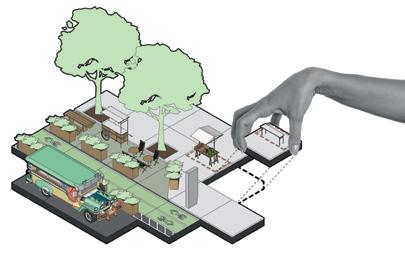
near the entryway; another, who paints using soil and other media sourced from nature, prepared to unravel a massive scroll from the porch across the front lawn; and weekend visitors to the island examined geological maps of New York City, responded to prompts on woodblock-printed cards (I will
Civic Engagement Fellow Mary Mattingly’s ongoing project Swale and a site for explorations around ecology and environmental justice. Swale began as a “floating food forest,” a landscape of edible vegetation and fruit-bearing plants sited on a barge docked at public piers in New York City, welcoming
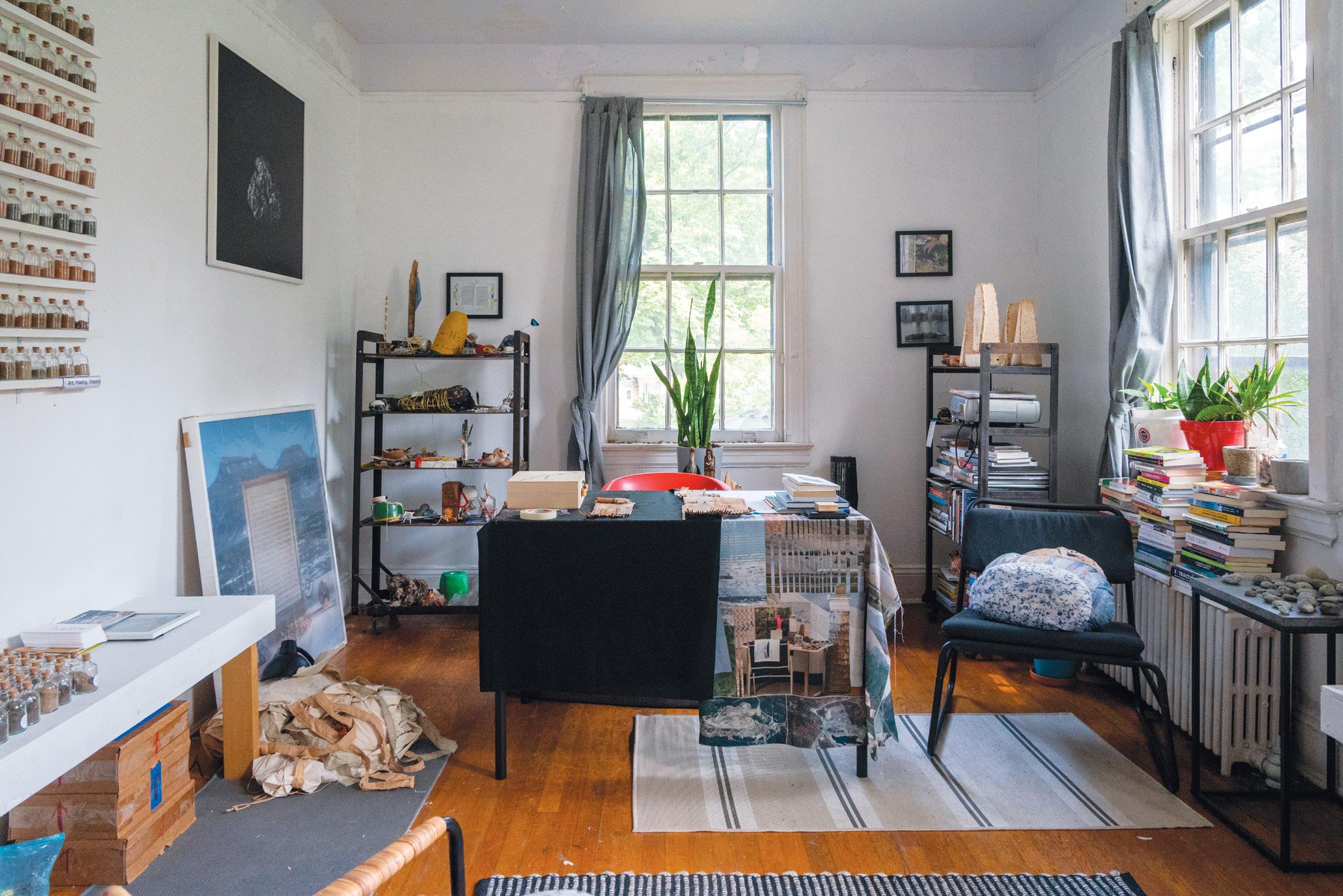
formed by participatory research in the community.
Swale Lab hosts resident artists and visitors in its investigatory spaces, each with a distinct focus: river regeneration, soils, food farm ing, and visionary futures, within the Ecotopian Library (above).

Launched in 2020, the Ecotopian
and other materials of ecological resonance. At Swale Lab, these pieces are arranged among work from Mattingly’s studio.
Muslin garments folded in a stack represent Mattingly’s revisi tation, during the pandemic, of an earlier body of work, Wearable Homes, that imagined personal
she assembled her possessions into monumental boulders, then physically hauled them through the streets and photographed them in significant locations.
At the time of this writing, Pratt students participating in Mattingly’s Functional Utopias workshop will be the next group of resident
library collection and other explor atory tools used at Swale Lab to connect Pratt students to practices that combine ecological thinking, art and design, and community engagement.
Read more and view more photos at pratt.edu/prattfolio/mary-mattingly
Two decades ago, the infuential design text Cradle to Cradle asked how we as a species could leave a footprint “to delight in, not lament,” looking to nature for cues for how to create more beneficial products and systems. In the Gradu ate Communications Design studio Sustainability and Design, taught by professor Jean Brennan, students are considering the effect of design with a holistic view of the process, from materials use, to distribution systems, to social and economic implications, as they develop solutions that renew, regenerate, and inspire. Last spring, students in the course began with site research around Pratt’s Brooklyn campus to record material waste; grew materials from organic sources like coffee grounds, crustacean shells, and banana peels; and worked in teams to come up with innovative, ethically considered package-design proposals.
For their project, Pits and Peels, students Allie McElwee and Mariana Romero-Carrillo examined the poten tial of organic waste to generate new biomaterials and methodically doc umented their exploration, taking an approach that united science, art, and social impact.
“Allie and Mariana took a hyperlocal and intimate approach to the class prompt,” says Brennan. “Pits and Peels responds to a need in their immediate neighborhood, where there is no city composting program and many of the residents do not have access to a backyard to initiate food-waste recycling on their own. Their project responds to this need with wonder and joy by thinking about the aesthetics and form poten tial of biomaterials made from a myriad of kitchen scraps.”
Romero-Carrillo and McElwee discussed their final project with Prattfolio. This is an excerpt of the Q&A.
CritJean Brennan, Adjunct Professor CCE, Graduate Communications DesignMcElwee and Mariana Romero-Carrillo, both MS Packaging, Identities, and Systems Design ’23
What was it about food waste that sparked you to explore its potential, and how did you set parameters for your exploration?
MARIANA ROMERO-CARRILLO:
We started our project by collecting coffee grounds, as we noticed the significant amount of them that go to waste with only one serving. After conducting research, we came across projects like bottles and paper made out of this material. This led us to take a closer look at our kitchen garbage and think “what else do we throw away on a daily basis and what can come of it?” Then we started thinking about possible applications in packaging design. As Allie cleverly said, “pits and peels are nature’s packaging, so why not mimic and give back?”
ALLIE MCELWEE: As we are not scientists or engineers with access to commercial production facili ties, making aesthetically pleasing bioart was a tangible platform for us to create while also considering the viability of the materials in the context of packaging. We chose to make aesthetics a priority as this has implications for packaging but also would be satisfying in the creation process. We both like to eat our fruits and veggies, which allowed us to work with a range of colors.
What qualities were you looking for in a material that could be used for packaging?
MRC: We were focusing on texture, smell, color, elasticity, transparency. There were some [materials] that had a terrible smell, like pumpkin seeds, but lemon peel had a beautiful color and scent. Examples like these high light the opportunity to use pits and peels as materials to help us natural ly elevate our products. Interaction is
key, and having interesting color and texture adds to the experience.
AM: Exactly! We considered those el ements while also considering what materials would interact well with our material creations and what the limitations would be. This was really exploratory as we were not consid ering packaging a specific product while we were creating. After the fact, we would consider what material could work with what and landed on the sandwich-wrapper prototype (opposite, bottom left).
What has this project inspired you to consider in relation to your own design practice?
MRC: The project opened my mind to thinking beyond conventional cardboard, plastic, and glass. As designers and consumers, it’s our responsibility to create solutions, not generate problems. For my next projects, I’ll always consider having the biodegrad able option, in terms of materiality. I think of pits and peels as an extra added value to a package because it gives us something to talk about, and isn’t this what brands want?
AM: Pits and Peels expanded my knowledge of biomaterials that I can create on a small scale, but more important (at least in the short term), the ones that exist at an industrial or small-scale level, like Notpla [a brand of seaweed material]. Jean Brennan also introduced our class to resources that exist at Pratt, like the Material Lab and the Sustainability Center. This was extraordinarily helpful and something I’ll continue to tap into with any prototyping I do at Pratt and in the future.
Read more and view additional proj ects from Sustainability and Design at pratt.edu/prattfolio/pits-peels.
Material tests using organic matter including red wine, strawberries, and seeds mixed with agar, and ( bottom left ) sandwich wrap made from rice water and agar. Photos by Allie McElwee and Mariana Romero-Carillo



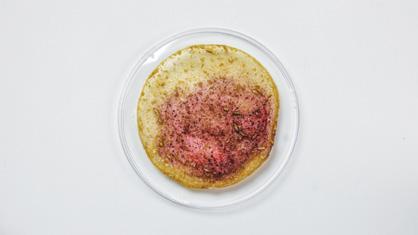





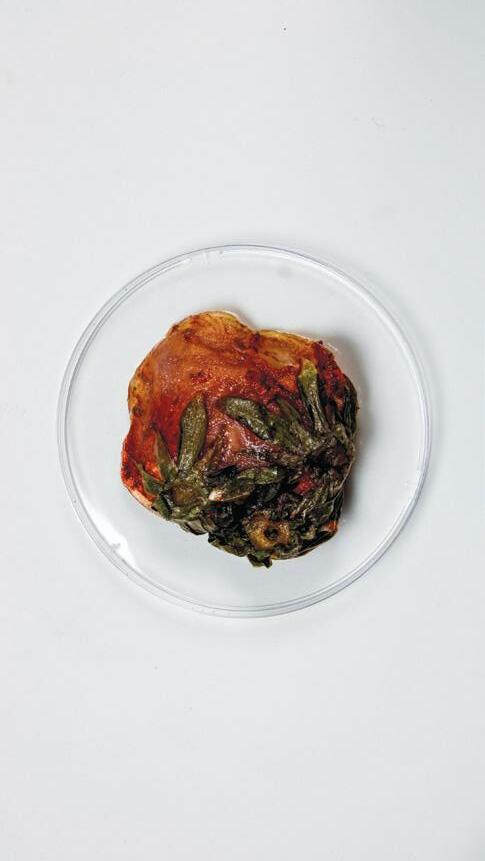
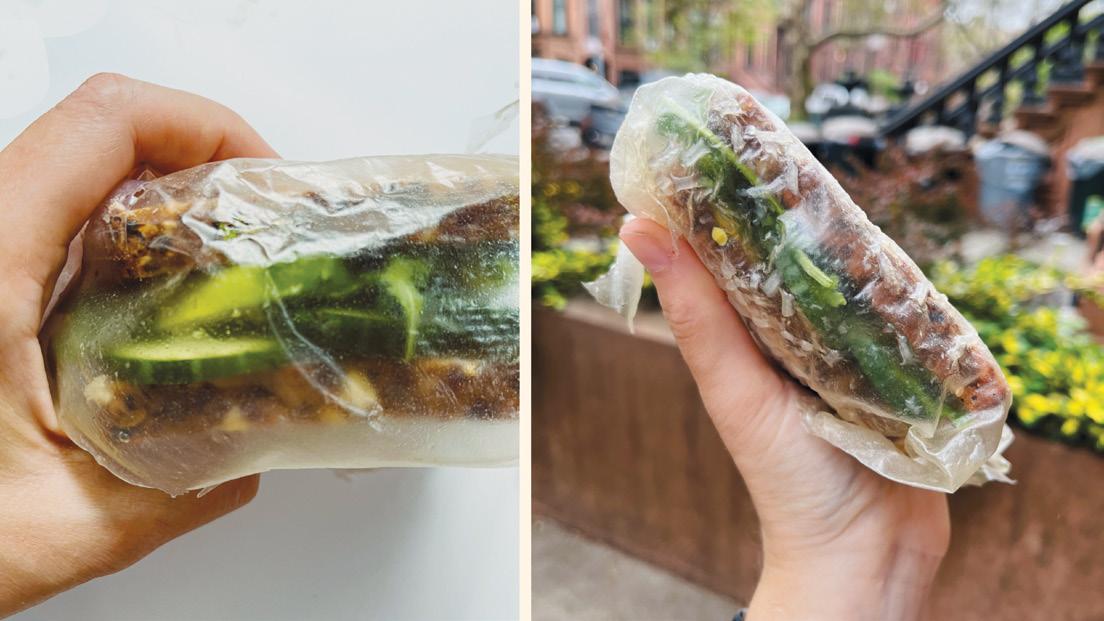

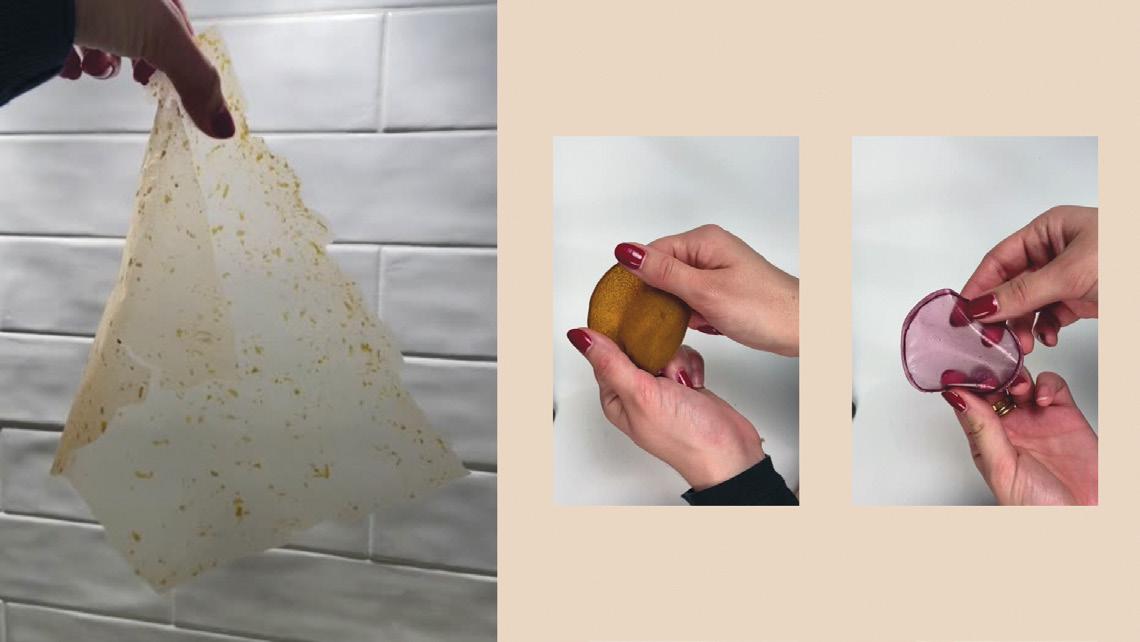
heryl D. Miller, president of Cheryl D. Miller Design, had no idea that her 1987 Print magazine article, ‘Black Designers: Missing in Action,’ would catapult her to national prominence and be a catalyst for efforts to raise conscious ness. In fact, she still receives calls and letters referencing that first documented account of the dilemma of Black designers.” words, penned by Brenda Mitchell-Powell in a 1991 AIGA report— describing the organization’s efforts to address staggering inequity in the graphic design field—are as true and relevant today as they were three decades ago.

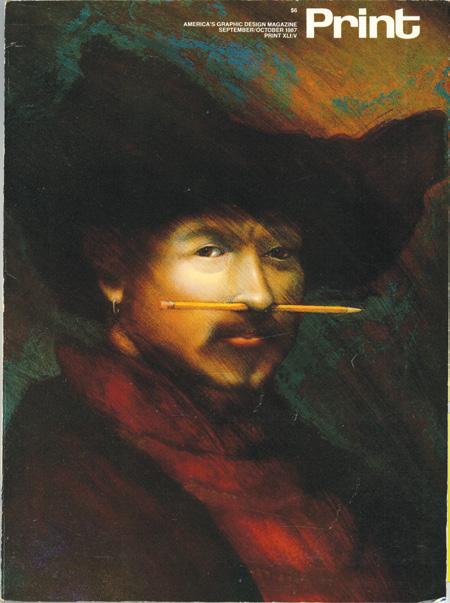
Thirty-five years ago this fall, Miller’s landmark story arrived in the pages of Print magazine, raising the question of “why the design field hasn’t made better use of the talents of Blacks who have already contributed so much to graphic communication.” piece was a critique and a call to action, illustrated with a dynamic selection of work being made by Black designers like Michelle Spellman, Eli Kince, Carol Porter, Kirk Brown, and more.
The story of that article began with Miller’s Pratt thesis. Two years out from her master’s and busy at the helm of one of the first Black woman–owned design firms—Cheryl D. Miller Design, Inc., NYC, on Lexington Avenue—she felt her thesis beckon from her office shelves. “It sat in my mind. I thought, this cannot stay here,” Miller recalls. “I took a copy of it, and I marched it over to magazine,” one of the industry’s definitive journals. By the time Miller returned to her office, her phone was ringing—it was editor in chief Martin Fox offering her an editor and a fee to write an article based on the thesis; she agreed.
she says. “I used to have portfolio reviews every week, helping people get jobs and get out of this snag. It was systemic. In the design business, you have to have friends, you have to have a network to get into a studio.
I knew the only way to get in the game was to make the game. So with that, my office was Grand Central Station. I saw the disenfranchisement, I saw the erasure. I knew the problem, and I needed to document it.”

Miller’s thesis, “Transcending the Problems of the Black Graphic Designer to Success in the Market place,” chronicled with penetrating clarity the pressures and challenges Black designers faced in their careers, from lack of familial support as they pursued their educations, to the high cost of tuition and materials, to an absence of mentorship in the The thesis and the article that followed laid the groundwork for the industry to confront issues that, while they persist today, have ever more historical documentation, scholarship, and energetic advocacy generating momentum to address them, due to Miller’s work and that of those who continue to build upon it.
In recognition of her advocacy and visionary contributions to the field as
a designer, writer, educator, and leg acy creator, Miller has won numerous awards, including the AIGA Medal for Expanding Access, the Cooper Hewitt National Design Award, and the distinction of being the inaugural Honorary IBM Design Scholar—all in 2021—among other honors. This October, Miller was inducted into the One Club for Creativity’s Creative Hall of Fame. (Read Miller’s full bio at pratt.edu/prattfolio/cheryl-miller.)
Meanwhile, the work continues. As an educator today, Miller urges her students, who range from young designers to seasoned design educa tors, to lean into their own advocacy, and to amplify Black voices—their own voices—in design history. Her words of advice to emerging design ers: “Create your aesthetic and your voice and write it into the canon. In my primary class, Decolonizing Gra phic Design, from a Black Perspec tive, I decolonize the basic 15-week history of graphic design, from my cultural lens. I’m going to teach you the canon because you need to know it. But you also need to know that there’s more to the story, and you have the story in you.”
Brenda Mitchell-Powell, “Why Is Graphic Design 93% White? Removing Barriers to Increase Opportunities in Graphic Design,” AIGA Journal 1, no. 9 (November 1991).
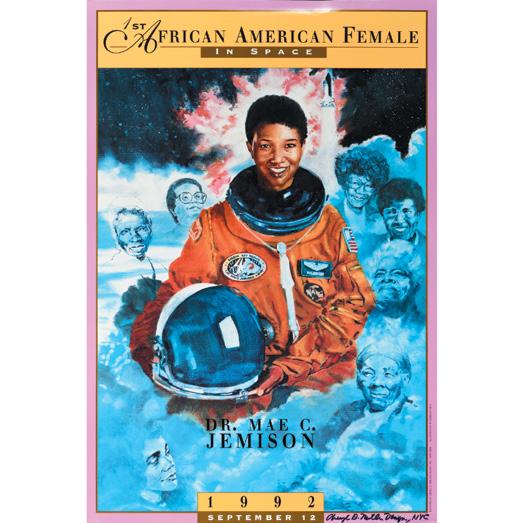

Cheryl D. Miller, “Black Designers: Missing in Action,” Print, September/October 1987, 58. Miller’s 1985 Pratt thesis is accessible online at https://purl.stanford.edu/tr623tv1100/, part of the Cheryl D. Miller Collection at Stanford University.




Anetwork of paper flowers pulses on a wall and ethereal sounds hover in the air, issuing forth as you lift lids from tall clay vessels, whose forms curve and twist like bodies in motion. A dark booth draped in plastic sheeting, where thin streams of water rain from a circuitry of tubes, awaits a participant to activate a light show based on neural impulses.
Further into the culminating exhibition for Pratt Institute’s 2022 graduates studying Interactive Arts, a landscape lit in iridescent tones invites you to pluck amorphous forms from the wall, powdery scents emanating from the objects’ white fur. A wave of your hand in the space above a plinth, outfitted with a sensor, produces mesmerizing trails on a screen, feathery lines that gently dissolve like ink drawn through water on a thick brush. You could free tigers from a burning forest in VR, nestle between two towering Henson-esque monsters whose mouths project a distorted image of a familiar space, or reflect on the sensa tion of time passing as you place small rocks into a churning tube that cycles the stones in and out in a loop.
The capstone and thesis work of the newest cohort of BFA and MFA alumni in the Digital Arts program’s Interactive Arts concentration, presented in a group show at TriBeCa’s One Arts Space Gallery in May, used digital media in a multitude of ways to physically engage visitors in the artists’ inquiries and concerns. Their installations and environments invited viewers to look, listen, smell, grasp, toggle, touch, gesture, and meditate, to unlock new sensorial experiences realized through AR/VR, programming, physical computing, and more.
This year, Pratt Institute’s Department of Digital Arts cele brates 35 years treading, pushing, and bounding past the edges of emergent technology’s applications in art. Interactive Arts now named, for the BFA program, Art and Technology negotiates a particular hinge point, where physical and virtual, tactile and digital meet, dissolving the boundaries of the art experi ence and offering new modes for understanding our humanity and imagining our place in the world, in this moment and projecting into the future.

<Opposite: Halley Bohm wove multisensory elements into their work. Plaster sculptures nestled in soft faux fur can be held, smelled, and repositioned as light and sound shift, triggered by motion sensors. Below: Trees represent “the starting point for re-creation,” “bystanders to the river of time” in this work by Yanan Zhu, MFA Digital Arts ’22, which uses hand-tracking software to translate the viewer’s gestures into
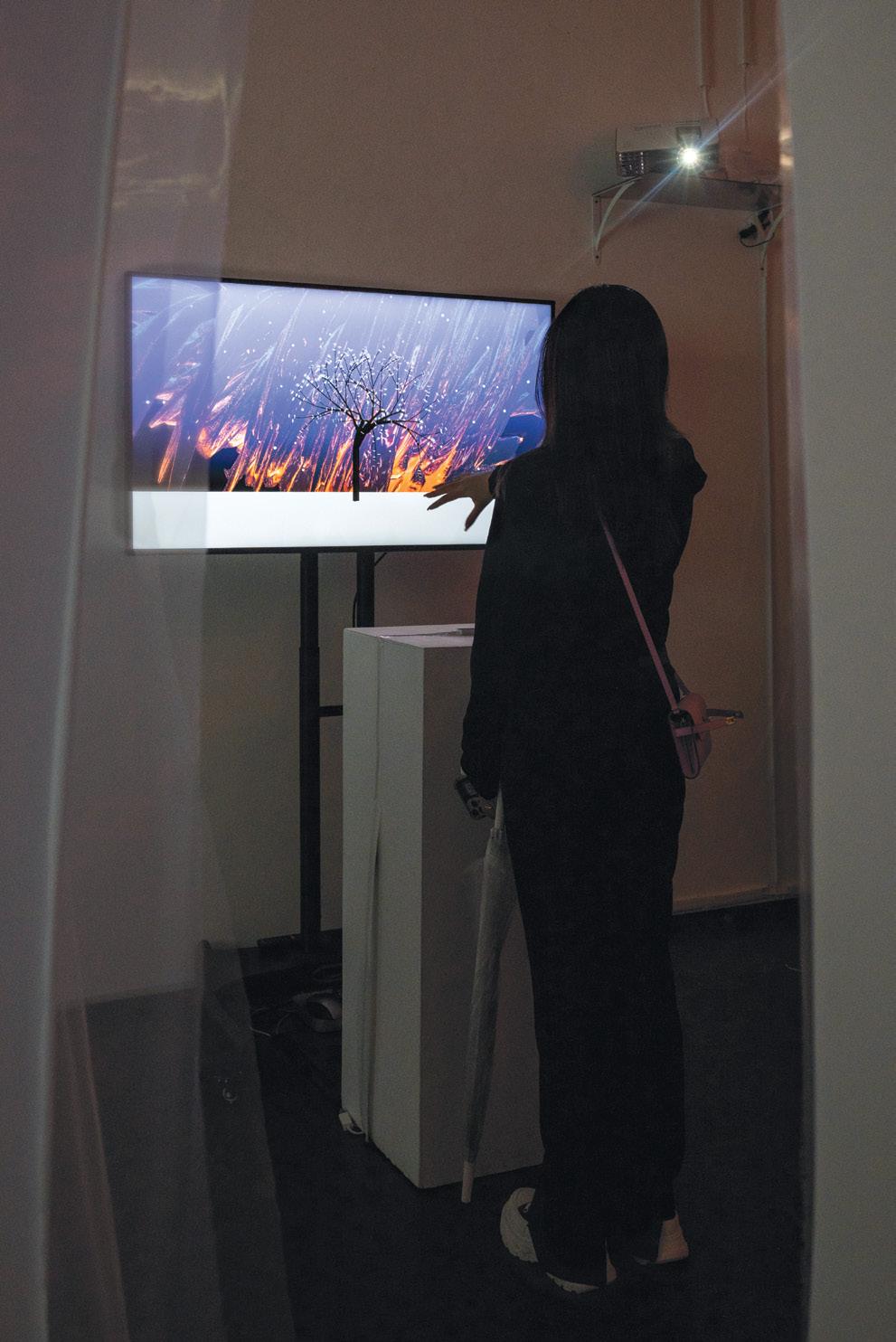
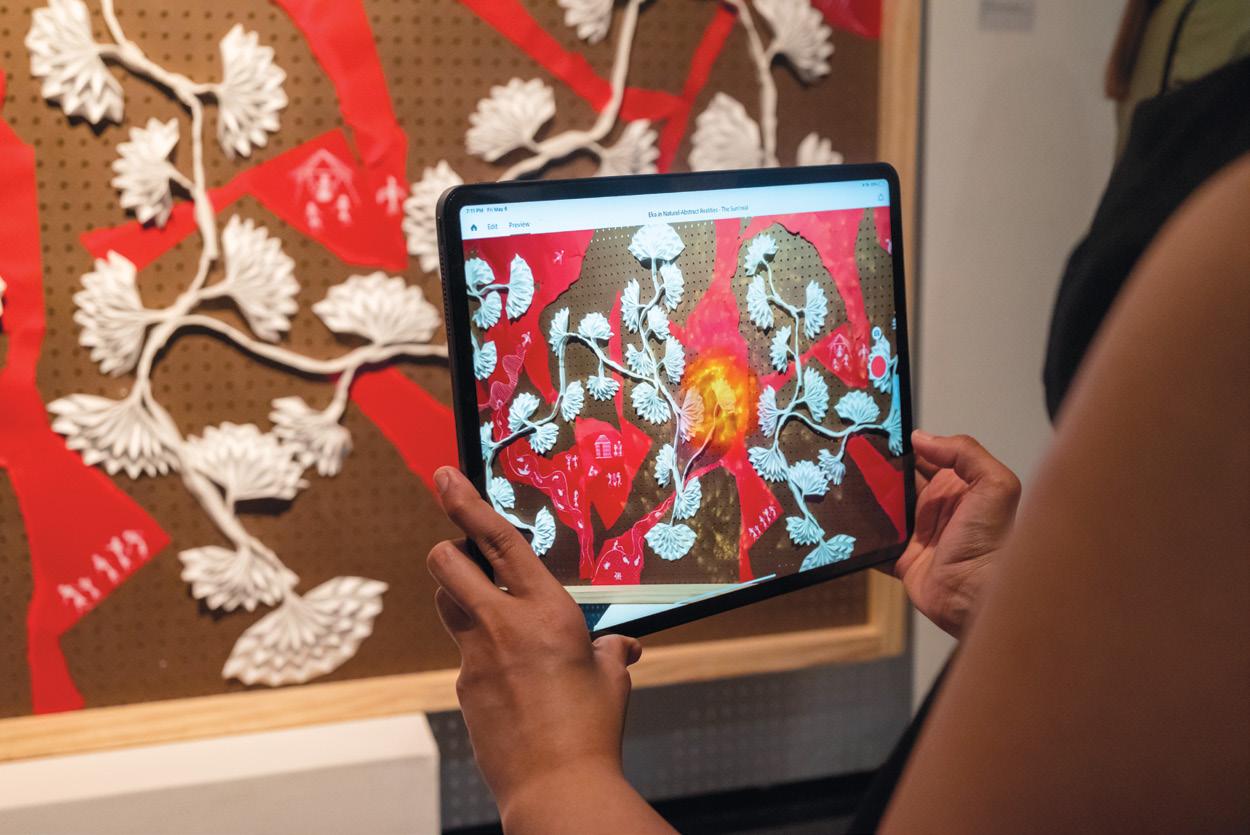

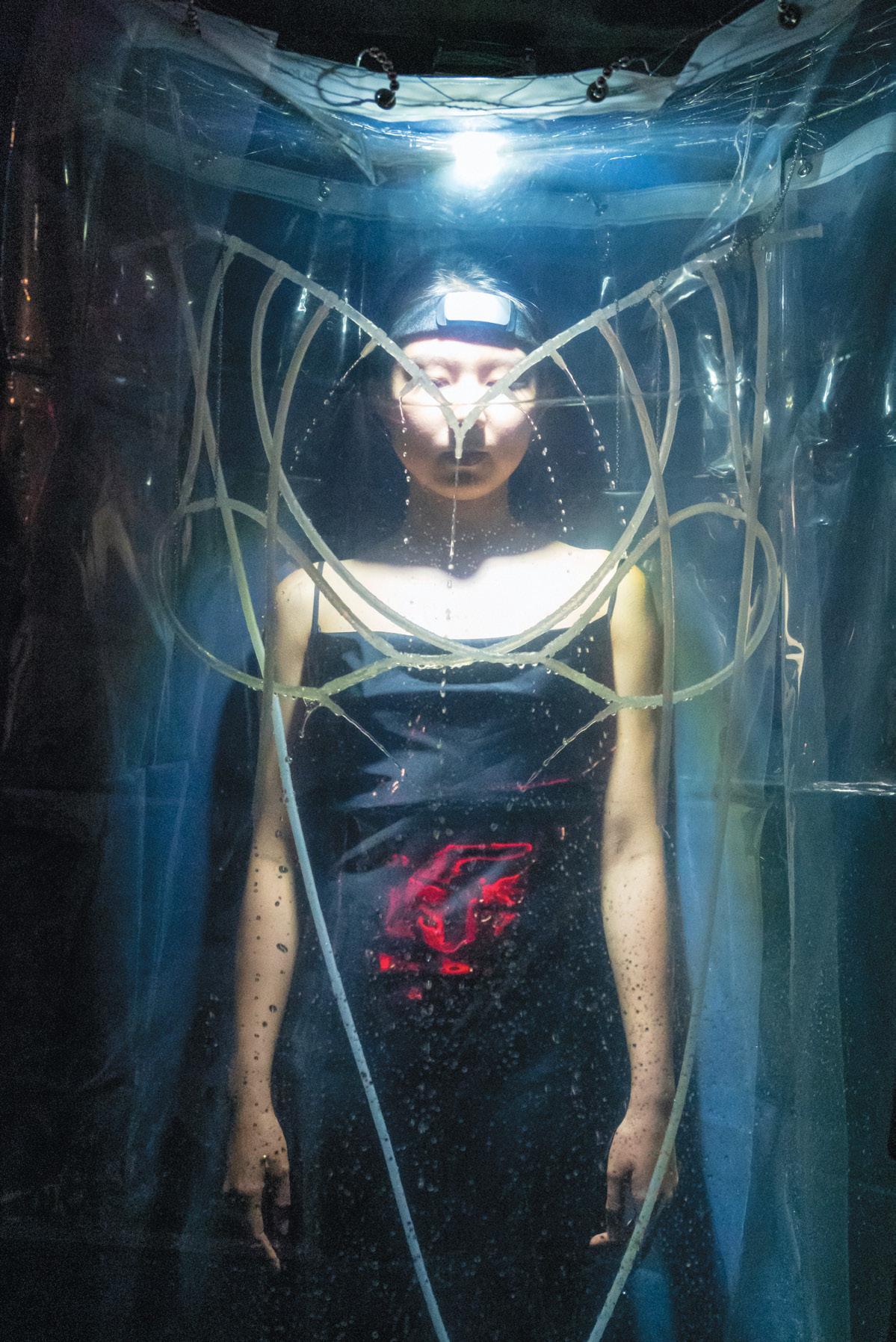
<Daeun Her, MFA Digital Arts ’22, invites the viewer to experience the act of calligraphic painting beyond the realm of touch. With their virtual strokes projected on a wall, the viewer’s gestures in the air above a sensor generate inky black lines that feather and dissolve in a watery field. Her says in an artist statement: “This work attempted to express the relationship between physical action in reality and digital action in virtual reality.”/>

Read more at pratt.edu/prattfolio/dreamscapes

 By Diana McClure
By Diana McClure

Toward a film industry, and a culture, shaped by all voices, with Nasreen Alkhateeb, BFA Fine Arts ’07
In moments of cultural change, when the hard work of shifting perspectives is essential to benevolent forms of human evolution, leaders who have long prepared emerge. Award-winning filmmaker Nasreen Alkhateeb, BFA Fine Arts (Sculpture) ’07, is one of those change makers. Her awareness of the realities and life-giv ing force of collaboration and intercon nectedness, central to her work and her worldview, is emblematic of the future many of us hope to build.
Alkhateeb’s multi-heritage and multi-hyphenate identity has shaped the lenses through which she has de veloped her body of work over the last decade, work that makes space—with a fierce sense of care—for underheard and undervisualized perspectives and experiences. In July, she received one of twenty Disability Futures Fellowships, awarded by the Ford and Mellon Foun dations and administered by United
States Artists, granting artists $50,000 in unrestricted funds to advance their practices. Alkhateeb’s recent roles span filming Vice President Kamala Harris’s campaign as lead cinematog rapher; acting as a cinematographer and director for NASA—from which she has received a Cinematographer of the Year award—including current work on a documentary highlighting the first Disabled astronauts; and par ticipating in fellowships with initiatives advancing film and television, such as Sundance’s Accessible Futures Intensive and The Disruptors. Long focused on social justice in her work, Alkhateeb uses her unique perspective to honor distinct stories that motivate audiences and shift culture forward.
She spoke with Prattfolio about working from a place that amplifies historically excluded voices, what that care looks like behind the scenes, and how to find the stories we want to tell.

Opposite: Nasreen Alkhateeb (second from right) aboard a zero-gravity flight, directing a documentary on Disabled astronauts in 2021. Photo by Hannah Arista Photography
Opening spread: Alkhateeb, photographed by Carlo and Elise Pizarro of Stereo Vision Photography
This interview contains answers both written (via email) and verbal (via telephone conversation), and has been lightly edited.
You spoke with Prattfolio seven years ago, in 2015, for the Lenses issue. How has your life changed since that interview, and how has that shaped your work?
The conversations I am having with people have shifted. I am being asked about my identities, instead of being asked to condense them. All of the things that make up who I am as a person, and how I see the world, are for the first time being considered by people out side of my family in a sociological and anthropological way. The irony is that all people are hyphenates. We have just lived for so long in the United States, where people are asked to boil themselves down to one label. It’s a remnant of colo nialism, and it is not helpful. I have always been proud of my identities, but now, I don’t have to hide them in order to survive.
A feature in Forbes published last year mentioned that you became Disabled in 2018, and that expe rience affected your work in a number of ways. How would you say your experience at that time transformed you as a filmmaker?
The idea that I am not part of the club (that obtains opportunities to succeed) was magnified after I realized I was Disabled. Seeing through a Disabled lens uncovered the stark contrast of the imbalance of equity.
If I can’t even get my body inside the building, how am I supposed to sit at the table? If the table is not designed for me to sit, how am I supposed to take part in the conversation? If I need to build my own table in order to take part, but the tools available are not ones designed for my hands, how should I proceed? Do you see where I am going with this? Our human classification systems are broken. Authentic representation is the
only way to bridge the gap of under standing. The notion that we are all starting off on equal ground—we are not. When will it be possible for all people to have the ability to par ticipate in the systems employed by governing structures?
Your practice as a filmmaker, producer, cinematographer, and director is very intentional in terms of the type of work and col laborations you engage. Is there a recent collaboration that has really energized you?
The pursuit of collaboration in the creation of culture-shifting work was developed as a result of being raised by a women’s rights grassroots organizer. I think when you cultivate social justice into art making, it attracts future collab orators who are motivated by the same yearning.
Recently, I had the opportunity to work with Donny Jackson on the series Supreme Models: Iconic Black Women Who Revolutionized Fashion, a series that intends to pay tribute to the Black women who transformed the fashion and beauty industries. [Jackson] is a showrunner who consistently illu minates pillars of American history that have long been sidelined, and I am humbled to bear witness to his capacity to carve safe space for women of color to thrive.
As a multi-heritage, Black, Iraqi, Disabled, raised-Muslim, LGBTQIA+, and First-Generation human being, you are intimately familiar with holding space that is inclusive of multiple ways of being. How does multi-perspective storytelling inform your work, in terms of both identity and media, and what is the interplay between craft and content?
Being a person who is intersec tional makes it much easier for me to hold safe space for people who occupy marginalized identities. When I approach a story, I try to quiet my programmed brain. There are so many nuanced ways
people are forced to communicate. It takes a practice of being able to listen, to actually hear what they are trying to convey. Their own message deserves my time, my consideration, and my ability to amplify their story. So people like them know that they are valued, and so more communities have the ability to get to know them. If I am working on a documentary about someone who uses a mobility device to move around, and the audience watching does not have anyone in their life who has that experience, it is my responsibility to amplify their story authentically, so the space carved into the audi ence is a safe one, moving forward, for anyone they come in contact with who uses a mobility device.
In regard to craft, being someone who comes from multiple inter sections, and being born multihyphenate, not having the power to be anything other than a multihyphenate, it definitely informs what I capture. I see texture, I see color, and I see light through the lens of someone who embodies those identities—someone who has lived in another country, someone who has been marginalized in a co lonialist society and patriarchy— so the things I capture and choose to amplify through my lens have every thing to do with who I am. I didn’t choose those identities. Those iden tities are embedded in my story.
Throughout the pandemic, the culture of work has transformed in ways that seem permanent— a movement toward work from home; a resurgence in union organizing; an awareness and respect for essential workers; and an increased engagement of the intersection of individual agency, sustainability, and consumption— in your field, where do you see the culture shifting? I’m thinking of some of your past comments on ideas around universal design within the context of production.
The art of filmmaking has histori cally excluded people who are Dis abled from being able to participate
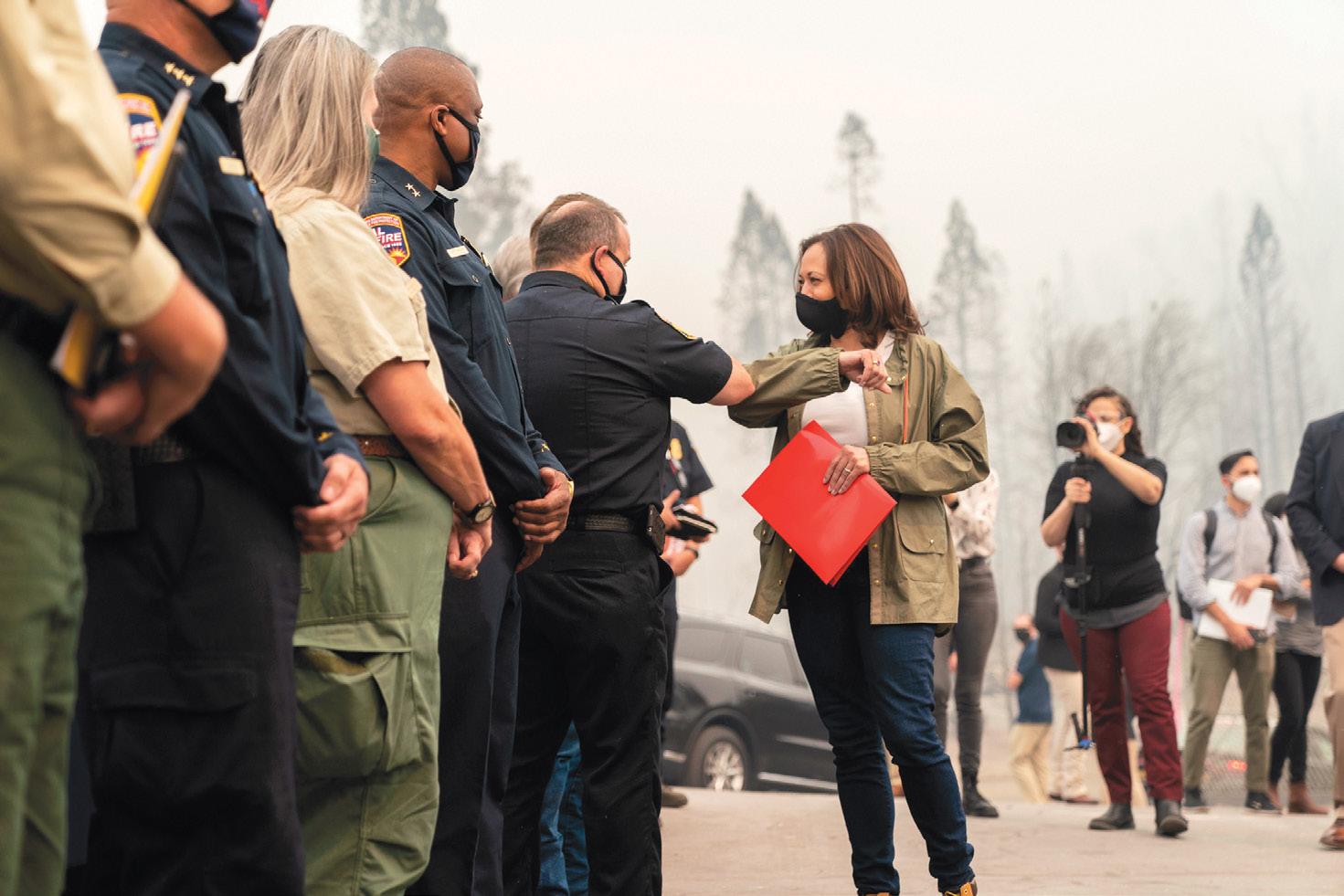
on set. Based on the conversations and partnerships I have witnessed between studios and productions, those preconceptions are changing. Studios are starting to understand they have the ability to set the tone for productions to utilize crew members behind the camera who are Disabled. That the disabled lens is a valuable one, in the crea tion of storytelling. Not just stories with disabled storylines, but Dis abled characters who are just living their lives, with joy.
[Editor’s note: Alkhateeb worked with Disabled creators to develop a toolkit to guide producers in creating more inclusive work envi ronments; the toolkit is available at allmediastorytelling.com/toolkit.]
The Disability Futures program aims to shed light on the dearth of visibility of Disabled creatives and position them as leaders for accessibility, language, and care. What does your recent award as a 2022 Disability Futures Fellow mean to you, and how do you see it impacting the evolution of your work in the immediate future and beyond?
It provides the financial support to sustainably develop disabilitycentered work on a much more prominent level while simulta neously putting me in conversation with future collaborators that I might not have reached otherwise. It amplifies my mission as an artist, and the award’s association with the Mellon and Ford Foundations amplifies me as an artist. It allows institutions and prominent entities who might have the same mission as me to be able to reach me as a potential collaborator. This in turn creates a new cultural paradigm— Disabled artists have something to say. What we have to say is valu able, and the types of projects that we are pursuing are worth ampli fying. For example, I am currently directing a feature documentary about a new generation of Disabled astronauts. For the first time in his tory, we captured 12 Disabled fight ambassadors who few collectively

I see texture, I see color, and I see light through the lens of someone who embodies those identities.
Disabled artists have something to say.
What we have to say is valuable, and the types of projects that we are pursuing are worth amplifying.

Below:
on a zero-gravity fight. We filmed the first fight, which took place in October 2021. It was successful— and it was a historical moment.
Considering this, in what ways do you hope the world as a whole will transform, and how do you envision your work contributing to that transformation?
Audiences crave authentic repre sentations that have historically been excluded from their consump tion. Look at Reservation Dogs and Lovecraft Country. I think con tent developed and written by the people who have experienced those stories refected within provides a much deeper understanding of a perspective that is foreign to someone else’s experience. The ability to illuminate the Disabled experience with other Disabled storytellers is a serious responsibil ity. The baseline of our experience has to come directly from us, so we can be seen as the leaders we are.
Making inclusive content, making authentic content, means that our collective future has the ability to welcome Disabled directors, writ ers, and showrunners. If you think about the reach television and film has, it means we are living during a historical era in the timeline of the human rights of Disabled people.
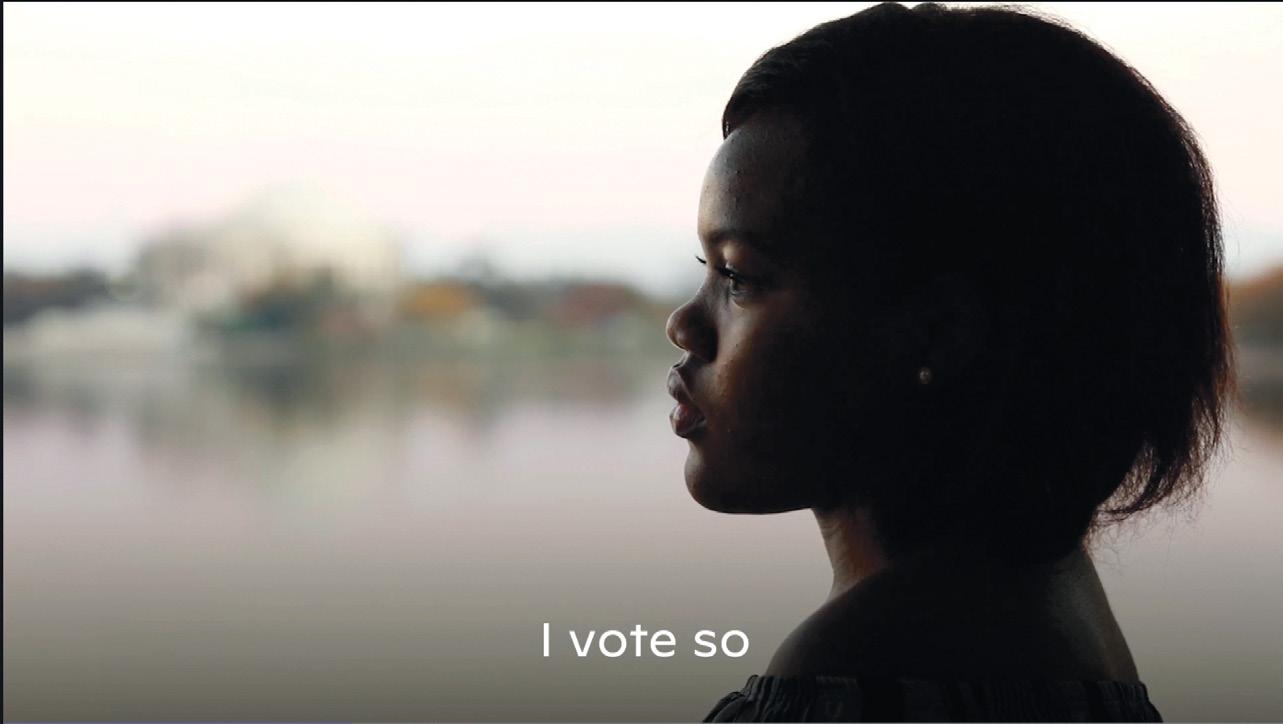
Do you have a piece of advice for people coming up in the industry who are similarly looking to tell untold stories and create space? Is there a lesson learned at Pratt that continues to resonate for you in your work and life?
The underestimation that you have experienced, use it, it’s fuel. Your instincts will help guide you to tell the stories you know are important. In the pursuit of telling those stories, you will find a community of people who will help sustain that drive. The relationships I have nur tured with Pratt classmates, and professors, persist to this day.
How are Pratt people imagining and making the future, as contributors to society and agents of change? How is their work grappling with issues of social and environmental justice, looking toward a world that allows more beings to thrive, more sustainably? How is their work probing dominant narratives and dismantling paradigms that no longer serve or even cause harm, conversing with history in order to author new chapters of our collective story?
In these pages, Prattfolio highlights just some of the future-related projects and proposals that Pratt faculty, students, and alumni are bringing into the present, laying seeds for tomorrow to come to fruition in ways that channel human ingenuity to benefit communities, all species, and the world for generations to come. The questions that follow offer gateways to what could be next.
Pratt faculty, students, and alumni are thinking, researching, and creating toward a transformed world
sustaining—and echo the compelling technology being implemented not far out at sea.
Along with sustainability, the ultimate goal is access— and with greater adaptability comes greater opportunity to respond to city dwellers’ needs in a dynamic way. “These structures will help city agencies plan for equal access to the waterfront, helping to open the coastline to 800,000 residents who have been historically cut off from nearby waterfronts due to, among other things, a lack of comfort and active recreation facilities,” Bausman remarks.
“Offshore wind power,” as undergraduate architecture professor Karen Bausman puts it, is “a near-future issue of socio-ecological urgency.” As an architect and artist, theorist and educator, she is leading research and design for a more sustainable, equitable New York City waterfront. Bausman, whose firm Karen Bausman + Associates are experts in the space of climate impact, sustainability, and issues of equity in urban waterfront design, has over the past two years worked with architecture students in the independent study course Research Topics to investigate the relationship between energy sources and the built environment and to prototype structures that could improve the experience of the city’s shoreline for the future.
In our coastal city, the effects of climate change leave shore fronts vulnerable to storm surges and rising sea levels. For their project, NYC Future Perfect, Bausman and her student researchers are examining alternatives to the waterfront’s static structures, from boathouses to recreation pavilions, that might adapt to a shifting shoreline while better meeting the changing needs of the communities that use them. The structures would be 3D printed, scalable, light, and movable. “Being able to disassemble and redeploy 3D-printed modular structures provides City agencies flexibility to meet the unique needs of individual communi ties on a real-time basis,” Bausman says, “versus the current public-procurement-to-construction process for new civic structures that typically lasts from 4 to 10 years.”
To be so nimble, the structures would also be powered by wind turbines, integrated into their facades, that would provide the required renewable energy to keep them self-

Reviewing printed prototypes with engineers and agency personnel from NYC Parks and NYC Planning, the response has been enthusiastic, and with the engineers, Bausman’s team has established next steps to realize the facade at scale, using robotics to 3D print. For this testing phase, they will need to draw on the expertise of scientists and engineers with specialized knowledge to help examine the effects of atmospheric conditions and other forces on the structure. Meanwhile, Bausman’s research and teaching around offshore wind power and the architecture that aligns with it, with a lens on the lived experience that architecture affects, will continue.
“For me, New York City has been a source of inspiration and a place of such unique vitality. Part of that energy stems from the city’s rich history, which has created a living sculp ture continuously shaped by human need, desire, motion, and climate activism,” Bausman reflects. “I am committed to continuing to develop the quality and impact of my current achievements in conceptualizing and developing innovatory wind-turbine-powered architectural infrastructure typologies and energy landscapes located within the intensifying New York City waterfront.”
As New York leads the nation’s offshore wind develop ment, with projects underway that aim to harness 9,000 megawatts of wind energy by 2035, a wind-powered future is already upon us. Harnessing the potency of this moment has also been important to Bausman, which led her and graduate architecture and urban design professor Maria Sieira to develop the Wind Power NYC Archive. This public digital collection, developed with the support of Pratt Institute Libraries and School of Information collaborators, compiles materials related to green energy in the New York City region, including the waterways in the tri-state area, documenting the implementation of offshore wind farms off the city’s coast, a record that could serve as a resource for those that follow.
NYC Future Perfect supermodel, 3D printed at ¼-inch scale by research assistant Cameron Troyano. Photo by Cole Bernstein, Pratt School of Architecture Undergraduate Architecture Archives
A few years back, conceptual artist Brad Downey, BFA Film ’03, commissioned a site-specific wood sculpture, Melania, 2019, a work embedded with critique of the US’s then administration, created by a chainsaw artist in the Slovenian town where the former first lady was born. Installed on a poplar tree trunk near Sevnica, the sculpture was burned in what appeared to be arson. As a memorial to the burned sculpture, Downey cast a bronze replica to replace the original object. This process prompted Downey to also consider how a digital work might commemorate the original artifact in a VR space.
Downey, born in Kentucky, a graduate of Pratt Institute and Slade School of Fine Art in London, and now an expat having lived and worked for most of his adult life in Europe (he is based in Berlin), was initially recognized for his prolific, often collaborative street-art sculptures in New York City in the late 1990s and early 2000s. While continuing his works of
public installation, Downey has now taken a similar approach into the virtual public arena.
The digital memorial of the piece based in Sevnica became part of Downey’s recent project Between Particles and Waves (betweenparticlesandwaves.com), a collaboration with artist Jan Vormann that brought together virtual works
“It’s the same reason that we started to work in public spaces—it’s a space. We just took it as a place where people can see our work, a more working-class approach to putting your work out to be seen.”
by an international group of artists for an exhibition held in the realm of Minecraft, the 3D world-building video game.

“In quantum physics, it’s either the particle or the wave that represents the basic, fundamental fabric of our reality, so I thought, maybe it’s light particles and waves that translate between the meta reality and the physical reality,” thus giving the Minecraft exhibition its name, Downey explains. “This could be any space, but I thought, Minecraft is the most widely used, most established, has the most people inside, and as a public space, it’s the most accessible, the most easy to use.”
Are exhibits in virtual space more accessible? Do these metaverse exhibitions still abide by the laws and conventions of the art world? As Downey puts it, the metaspace has a lot in common with real-world venues he’s been working in.
“It’s the same reason that we started to work in public spaces—it’s a space,” Downey says. “We just took it as a place where people can see our work, a more working-class approach to putting your work out to be seen. So this internet space takes the same sort of sentiment, where everyone is engaging with it, it’s not this elitist space, and it’s also a space that’s evolving, it’s dynamic, evolving much quicker. It’s something everyone is involved in, not just artists.”
The idea was for the exhibition to be open and discoverable, with additional ways of experiencing the show outside Minecraft as well, via recordings on digital platforms like Twitch and Reddit. Furthermore, Downey and Vormann also wanted to offer viewers the opportunity to dive deeper into the art in a guided way. And that’s where institutional presence came in, in a cooperative rather than gatekeeping way. “We had museums like the Guggenheim and Total Museum from Korea do guided curator tours,” Downey says. “So you had this space mostly targeted to a younger audience, but then we had academics giving tours about serious artists doing serious site-specific works.”
There was also an interactive element. Downey offers some backstory. Early in the exhibition, “some very good Minecraft players entered a kind of ‘door to hell’” and hacked their way up to destroy the original artworks. Downey and his collaborators restored the pieces and secured them, but eventually, they opened up the exhibition, setting it to an “anarchy mode” that let people change the work. “Anarchy”
translated to “destruction,”
lost. The works in their original forms were then released as NFTs, with downloadable content that could be installed in any metaspace their owners might inhabit.
Will we see many different metaspaces in the future?
“We’re developing our own metaverse now,” Downey shares. “I had this idea to do a museum of ephemeral art. There’s a lot of artwork that has existed in physical space that now only exists as documentation, so I thought we could try to recreate the works, make them one-to-one scale in a metaverse and do a museum of ephemeral art....I imagine a space where you walk through many cities very quickly and see many site-specific works that don’t exist anymore.”
Ultimately, new spaces like this, with their own rules of time and motion, could be a benefit for artists, scholars, and art appreciators, though Downey naturally sees more than one side of the picture.
“Of course, every space is ready for corruption,” he says. “It still comes back to the problem of capital and money, and you need programmers to build these spaces. These things get controlled and there’s surveillance—these are huge factors when dealing with metaspaces. But you have a lot of chances in the metaspace that you don’t have here, just based on physics.”
By Andy P. Smith, BFA Writing ’04View highlights from the exhibition Between Particles and Waves at betweenparticlesandwaves.com. A career-spanning collection of Downey’s work is collected in the book Slapstick Formalism: Process, Project, Object (Hatje Cantz, 2022).
ultimately
but the pieces were notInstallation view of Between Particles and Waves showing the base of Downey’s digital memorial. Courtesy of the artist
“Of course, every space is ready for corruption. It still comes back to the problem of capital and money, and you need programmers to build these spaces. These things get controlled and there’s surveillance—these are huge factors when dealing with metaspaces. But you have a lot of chances in the metaspace that you don’t have here, just based on physics.”
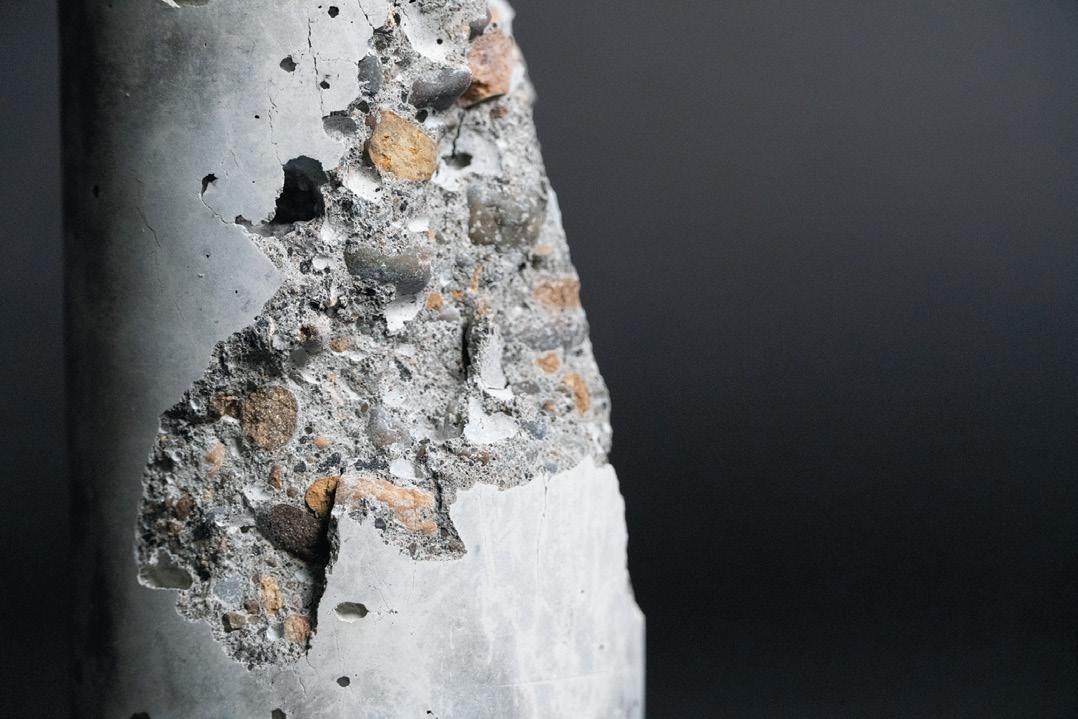
Madison Wilds Burger, BFA Photography ’20
As a student, Madison Wilds Burger researched biomaterial companies, leather industry practices, and fashionindustry pollution. Spurred to investigate sustainable alternatives produced without the harmful chemicals used in leather tanning that have both an environmental and a human toll, she began experimenting with bacterial nanocellulose, a biopolymer derived from bacteria and yeast. The renewable leather can grow quickly and achieve a range of thicknesses—including delicately paper thin (right), which was Burger’s spec for a recent collaboration with a kombucha company, for which she created biodegradable tissue for their gift boxes. madisonwildsburger.com


With technology company Bioforcetech, Elizabeth Bridges and Garrett Benisch are producing OurCarbon, a carbonsequestering material derived from organic matter—for example, biosolids from wastewater. Each ton of material produced prevents 10 tons of CO2 from entering the atmosphere, they report. Working with collaborators from across industries, Bridges and Benisch have explored a variety of applications for OurCarbon, from glass and concrete (right screenprinting ink. madewithourcarbon.com
During her time in the fashion industry, Mónica Santos Gil became familiar with leather alternatives like PU (polyurethane) and PVC (polyvinyl chloride) and the impact of their lifecycle. When she set out to start her own handbag brand, Santos by Mónica, Santos wanted to work with materials with a more humane footprint. She considered a range of plant-based leathers, ultimately arriving at a biomaterial made from nopales ), Mexican cacti that require only rainwater to grow and one-fifth the amount of water used to create traditional animal leather, achieving a supple texture and surface that lets the natural pigments used in her santosbymonica.com


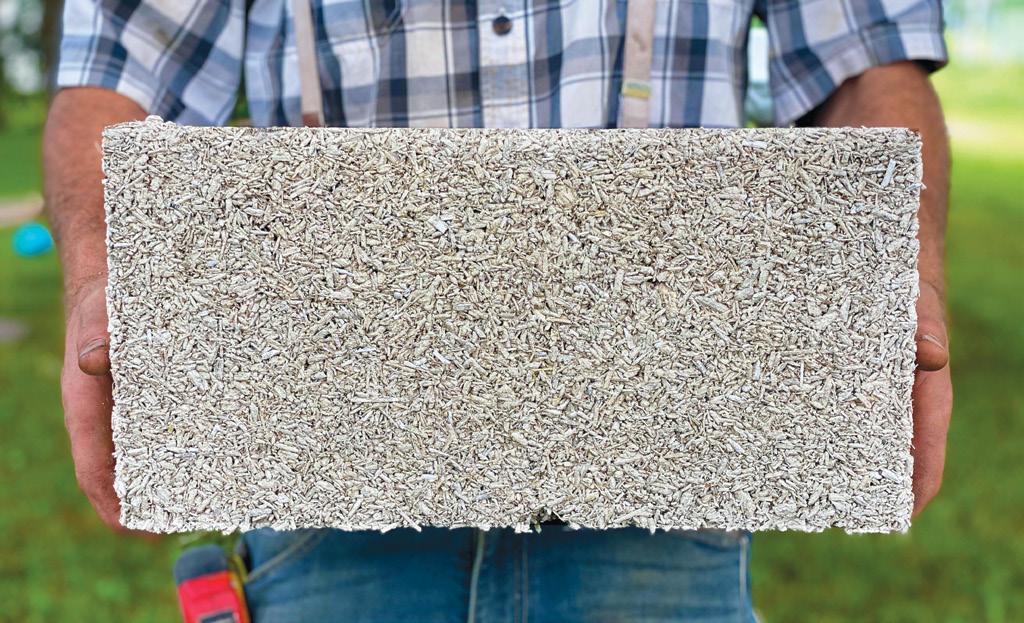
The start of the pandemic was an inflection point that raised questions around the systems and processes that undergird our lives at every level. In the classroom, defining structures had to be suddenly reimagined, and the ways teachers and students connect, how work develops, and the role of relied-upon classroom structures were all fields for creative reimagining. For professor Analia Segal, coordinator of the sculpture and integrated practices major within undergraduate fine arts at Pratt, this moment initiated a shift that, while it could appear simple on the surface, became a unique opportunity to make lasting changes.
It started with a familiar concept, one easy to take for granted—the deadline—and evolved into an interrogation of the meaning of the word itself, which for her had begun to resonate ominously as two words—dead_line.
As a way to support students through the sudden, dramatic changes of spring 2020, Segal decided to remove all assignment deadlines. It was a means of accommodating the shifts imposed by physical distancing, with uncertainty as to what might happen. To her surprise, all of her students completed their work before the semester ended. “We’d
been replicating a teaching methodology that we’d had for hundreds of years,” Segal says. But removing that historically fundamental element in the learning scaffolding didn’t stifle her students’ progress. For them, “the desire to fulfill their goal was much stronger than anything else.”
This spurred what Segal calls “a forensic reading of the syllabus,” homing in on the language that forms the frame work and expectations for her classes. Segal, who hails from Argentina, looked to her first language and Latin American/ Latinx identity to begin this work. She replaced the word deadline with the Spanish translation, entrega, which also
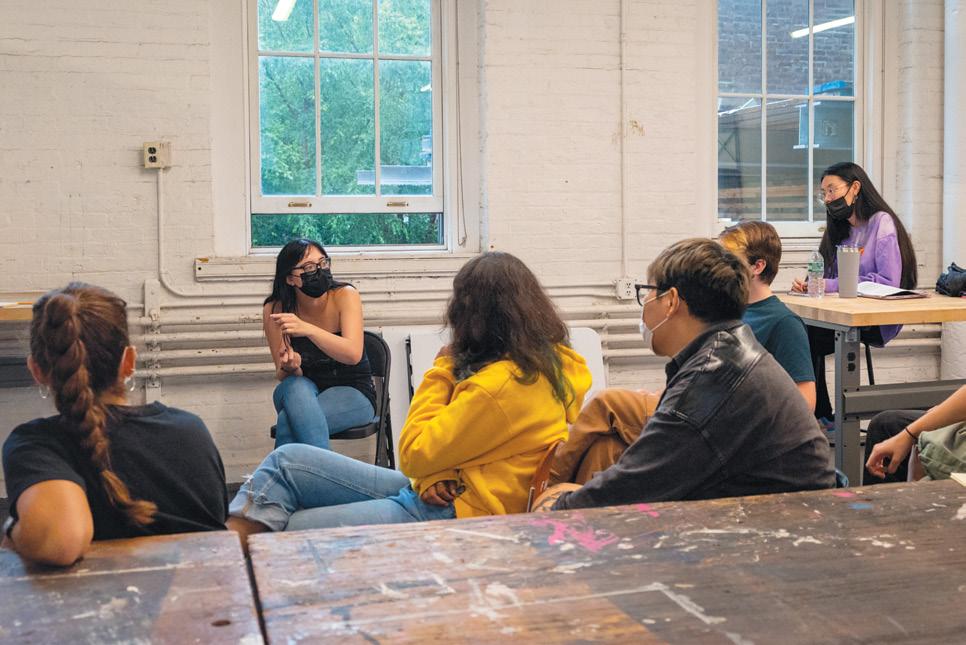
“The assignments are a springboard, portals that allow students to experiment, take risks, engage in a collective intellectual growth, and jump into the unknown of the creative process.”
— Analia Segal
means “offering.” This milestone marks the time when the work is ready to be offered and shared with others, an idea that Segal says “resonates with the concept of ‘hospitality’ from Derrida and ‘linguistic hospitality’ coined by Richard Kearney.”
Next, Segal removed the sequencing of assignments, allowing students to approach them in an order that aligned with the ideas they were developing. The critique then is embedded throughout the course, set by students on a shared calendar, versus scheduled for everyone at set inter vals. Segal conceived of this as “a way to nurture synergies” and encourage, as she says, “a more fluid dialogue between the thinking and the making, and have the student become highly aware of their individual process, being in tune with what I call their ‘inner compass.’”
For Helena Chappell, BFA Fine Arts (Sculpture and Integ rated Practices) ’23, Segal’s framework generated a sense of fulfillment beyond the satisfaction of meeting an assignment deadline. “It lets you sit in the discomfort of being unsatis fied,” she said in a conversation with Segal—who interviewed a number of her sculpture and integrated practices soph omores and juniors to facilitate research around her new approach. Chappell reflected that this helped to move work forward, following the qualities of the work that resonated and discarding what didn’t.
The classroom structure also spurred Chappell to organ ize her time in a way that brought her closer to the work itself. “I felt like I owned my work more,” she said.
Kael Frank, BFA Fine Arts (Sculpture and Integrated Prac tices) ’24, echoed that sentiment: “It helped me get better about taking my own plans seriously.” Frank chose to follow the assignments in the order that they were written, seeing a meaningful arc in the way they were arranged.
Several students remarked on how Segal’s framework opened up space for research and facilitated experimenta tion with process and materials.
Roni Hagai, who attended Pratt on exchange from Bezalel Academy of Arts and Design in Israel, observed, “It allows you to start the work... and let the work evolve more naturally....I could let the work take its own path.”
For Luca Rekosh, BFA Fine Arts (Sculpture and Integrated Practices) ’23, the fluid framework can also change the scale of the vision around the work, and give students an opportuni ty to learn firsthand what it will take to achieve it. “It allows me to come up with grand schemes and work through that pro cess—work on something, leave it, work on something else, come back to it. I’ve been able to experiment a lot because of it,” Rekosh said, adding, “I got a lot out of seeing people’s processes, and seeing how they work through things.”
Kai Barker Dennett, BFA Fine Arts (Sculpture and Inte grated Practices) ’24, agrees. “We can all feed off each other,” Dennett says, noting that the unsequenced critiques can encourage that as well as a new internal rubric for assessing the work. “When we’re all presenting on the same day, we’re usually judging off how much the work fits the assignment,” while Segal’s framework “doesn’t force us to think in the metric of, ‘I wasn’t successful in making this—it’s not as “Balancing Acts” as that person’s,’” referring to one of Segal’s sculpture exercises. Assessment and discussion becomes more about the work itself.
Ilayda Celik, BFA Fine Arts (Sculpture and Integrated Practices) ’23, told Segal that the critiques were particularly eye opening. “I’ve learned the most from seeing people present,” Celik said. “They expanded my ideas around the mediums that are accessible in sculpture.”
“For those things to happen, there has to be a level of trust, in each other, in the classroom—then failure can happen, experimentation can happen, and finally structural transformation happens,” Segal says. “The assignments are a springboard, portals that allow students to experiment, take risks, engage in a collective intellectual growth, and jump into the unknown of the creative process.”
This pedagogical research resonates with Segal’s artistic practice, which includes examining the ontological nature of touch and diasporic issues of inhabitation, from the physical to the digital. It is also part of a larger project, which Segal calls “m_OTHER tongues,” work that has been supported by the Center for Teaching and Learning at Pratt, through which Segal has participated in several faculty development committees including, most recently, Radical Pedagogies and Deep Dive Community on Participatory Education, and the Faculty Research Leadership mentoring program through the Office of the Provost. The project explores language as a bridge, diasporic cultural production, and ideas around identity and citizenship.
The overarching goal of Segal’s work in the classroom is to foster a more “multilingual, multidimensional, multi sensorial community,” she says, using language as a tool to dismantle old hierarchies and build something new for a new generation of student artists. Even before this recent explo
ration of language in the classroom framework, Segal has emphasized the term citizen when she refers to her students. That idea of student as citizen takes on new meaning in the classroom ecosystem Segal is developing, exploring the porosity between art and society.
“Teaching and learning side by side puts the relation ships in motion in a different way,” Segal says. “The collab oration and reciprocity among the students becomes a key element that gives them agency and responsibility to their own learning. The students’ relationship to the academic system and how they can embrace and operate within it changes. It opens up diversity and inclusion—when you have something that functions with different energies circulating, instead of one, it sets a profound path of equity in motion. The teaching and the learning is happening as a rhizome— assignments in the syllabus are conceived as an ‘ecology of experiences,’ a series of interconnected concerns. I’ve used ‘re-languaging’ and ‘re-thinking’ as a methodology to review the teaching and learning scaffold and work together to envision a new one.”
“It allows you to start the work...and let the work evolve more naturally.... I could let the work take its own path.”
— Roni Hagai
Prompt by Dianca London Potts, visiting assistant professor of writing
“Writers think often about how language brings into being that which could not have been until it was put into words,” shared Claire Donato, acting assistant chair of the Writing Department, and Audrey Massmann, visiting instructor in the Math and Science Department, in a Q&A about a new workshop, titled Speculating the Environment, that they launched this fall at Pratt. “‘The limits of my language are the limits of my world,’ Wittgenstein famously wrote. We cannot actually begin to reshape the world without words: speculative language can help us exercise an empathy muscle and project a better future.”
This year, Donato and Massmann are leading colleagues and students across the Institute in developing language and practice to wrestle with the complex ways in which our world is changing. The workshop is taking place over four themed sessions, each of which will welcome guest facilitators,
like Pratt writing professor Dianca London Potts, whose prompts for the course Writing the Apocalypse: Cataclysmic Cartography as Narrative Design, held recently at The Center for Fiction in Fort Greene, serve as inspiration for exercises in the Pratt workshop. A culminating symposium is planned for spring 2023, in which work generated in the workshops will be on display, with the aim of centering speculative practice as a means of creating tangible change.
“Our goal is to explore the transformative power of speculation through case studies of phenomena like stock market speculation shaping extraction or sea level rise projections affecting the built environment,” Donato and Massmann say. “It is for this reason that our workshop title frames speculation as an action done to the environment.”
Read the Q&A at pratt.edu/prattfolio/speculating.


Thirty-thousand etchings of a signature cover the walls of a series of translucent pavilions, each impression a mark of insistence on the humanity of an individual. The replicated signature belongs to Portuguese diplomat Aristides de Sousa Mendes, who during World War II defied his government to authenticate some 30,000 visas, saving the lives of scores of people seeking refuge from the Nazis, and paid a harsh price for his actions during his lifetime. Eric Moed, BArch ’12, visiting assistant professor of undergraduate architecture, designed this monument, which was installed outside Sousa Mendes’s home in Portugal, based upon Moed’s thesis at Pratt. For Moed, remembering stories like that of Sousa Mendes and the individuals and families who stood on the brink of precarity and survived as a result of his humanitarian acts—families including Moed’s—is a critical part of creating a just future.
Since that project, Moed has gone on to make memory a focal point of his work. He designed a traveling memorial that would collect and contextualize Civil War monuments, and ultimately expose them to decomposition, with a team of classmates at Harvard Graduate School of Design, where he earned his master’s in design studies with a concentra tion in art, design, and public domain. His master’s degree
project was an educational workshop in the form of a memory game designed to generate discussion around monuments and memorials, with a particular aim to engage the public in those conversa tions. In Jacksonville, Florida, Moed and collaborators Caila Moed, his wife and a Jacksonville native, and Samuel Maddox worked with local Black cultural and historical institutions to create a public artwork and monument that functions as a bike rack as well as a directional tool, pointing toward sites of significance in Black history in the city. This past year, Moed was part of the Year 8 cohort of NEW INC, the New Museum’s cultural incubator, along with Penelope Phylactopoulos, with whom he cofounded oopsa –Office of Open Practice Studio/Agency, a transdisciplinary hybrid creative studio. The two worked in NEW INC’s Future Memory track alongside fellow artists, designers, scientists, and others focused on new modes of telling stories that shape culture.
Today, Moed also teaches the Pratt undergraduate architecture course Future Memory in the Public Sphere, an advanced seminar that takes a critical look at how memorialization plays out in public space. His students’ projects take spaces in New York City as their sites of inquiry— for example, interrogating existing monuments like those in Columbus Circle and Washington Square Park, looking at ways to honor women’s skateboarding in Astor Place, and amplifying the indigenous roots of the island of Manhattan and the Brooklyn neighborhood of Brownsville. Their work probes the histories of spaces and monuments to imagine new, more inclusive, nuanced, and expansive ways of telling the stories that shape our society, asking, what will the future look like for memory?
Read more at pratt.edu/prattfolio/future-memory

In her forthcoming book, After Spaceship Earth, Eva Díaz, an art historian and associate professor in Pratt Institute’s History of Art and Design Department, critically examines R. Buckmister Fuller’s influence on contemporary art and the ways in which his ideas have shaped visions of the future. Fuller, along with his Black Mountain colleagues Josef Albers and John Cage, was also a subject of Díaz’s previous book, The Experimenters: Chance and Design at Black Mountain College (Chicago, 2015). Here, Díaz discusses what her research has illuminated about how artists today are engaging with the theoretical underpinnings of Fuller’s investigations of tech-enmeshed futures, probing questions of equity, social and environmental justice, and the human desires bound up in outer-space aspirations.
Your work on After Spaceship Earth originates with R. Buckminster Fuller, but there’s another force at play as well—Sun Ra, the late avant-garde jazz artist, whom you have described as equally important in this conversation. Could you describe the theses or core visions central to their work that counter one another?
R. Buckminster Fuller hoped to reorient mundane life towards a greater awareness of Earth as embedded in the wider cosmos. Yet the eccentricity of his metaphor of “Spaceship Earth,” which characterizes architecture as an advanced technological vehicle that can supplant natural ecologies in sustaining life, has had lasting effects in how the future is envisioned as human-authored and technologically
dependent. Like Janus’s two faces, Fuller’s euphoria about technologies expanding human access to the universe is inextricably linked to Sun Ra’s sense of whites having robbed others of a place on Earth, thereby necessitating the flight into outer space. One important proposal of what I term neo-Afrofuturist artworks is to temper the vision of the future as a frontier of exploration and technological progress with recognition that the loss of history for enslaved and subjugated peoples was the defining condition of previous colonial endeavors.
In your research, what have you found about how contemporary artists can help us think differently about futures beyond Earth—in ways that probe or challenge dominant narratives around human engagement with outer space?

As NewSpacers like Jeff Bezos and Elon Musk embrace Fuller’s notion that “we are all astronauts,” visual art today does a lot of the heavy lifting when it comes to issues about rights to space. Artists working on access to space are at the front line of a critical investigation about the contours of the future, both in its material form and social organization, recognizing that much of the surplus capital accumulated from the internet and tech boom is now being funneled into NewSpace projects.
The metaphor of Fuller’s “Spaceship Earth” as a hybrid ecological-architectural object is not lost on artists working to produce experimental structures and scenarios in art galleries, public installations, and film. Some artists have undertaken projects that emphasize instead the spaceship as a “poor” architecture, an alternative shelter from which to reflect on histories of inequality and deprivation, or on the role of the colonist or astronaut in modeling ideal citizenship. Fuller was nothing if not a great showman, adept at promoting a vision of life beyond Earth—a utopia in which computers would supplant brainpower in specialized tasks, allowing humanity to turn to the higher forms of thought within the larger matrix of the universe. In his 1960 Cloud Nine plan, a collaboration with his former student and later architectural partner, Shoji Sadao, Fuller proposed that large, fully spherical geodesic habitations be heated so as to float above the Earth or other planets, thereby untethering human life from terrestrial existence. Gathering works that vector out from Fuller’s project, my research shows how artists have opened up those visions of DIY space travel to wider communities than he anticipated, questioning Fuller’s “we are all astronauts” rhetoric, and taking issue with his ecologyas-technology model of “Spaceship Earth.”
What are some examples of particularly powerful or provocative projects that are raising questions around justice, access, equity in relation to space?
The power of space exploration to organize earthbound desires is evidenced by the wide array of artists who address the topic. Artists such as Jane and Louise Wilson, Connie Samaras, and Matthew Day Jackson employ film, photography,
and sculpture to explore the sites on Earth where older space programs once thrived and document new zones where private, corporate, or otherwise inaccessible space ventures are located. Other artists such as Tom Sachs and Tavares Strachan produce work prototyping conjectural objects and architectures for space travel and exploration. While suspi cious of Fuller’s technocratic ideology, they are nonetheless drawn to his emphasis on ad hoc architectural process. Visual artists are also critically investigating the harsh material reality of space. Artists like Rachel Rose and MPA question the managed existence and scientific supervision of astronaut life and the physiological and psychological pressures that off-planet existence might hold for humans. They also flag the astonishing work of repression involved in pretending that a technologically-governed capsule existence can surpass the plentitude of ecologies on Earth, or that space travel will foster freedoms, both bodily and political, when it will above all be determined by scientific instruments applied with capitalist means.
Countering Fuller’s optimism about humanity’s orienta tion to outer space, a post-Apollo-missions generation of artists, many born in the late 1960s to the 1980s, reckons with its own belatedness to a conception of space exploration as an aim of public culture in the current era of New Space priva tization. Several of the artists in my discussion, who include Paweł Althamer, Halil Altindere, Nuotama Frances Bodomo, Cristina de Middel, Larissa Sansour, Tomás Saraceno, and Apichatpong Weerasethakul, engage in explicit criticisms of Fuller’s techno-futurity. They register an elegiac sense that the era of space exploration as a program of knowledge acqui sition, interspecies communication, and even intergalactic colonization—in short, the epoch of cosmic optimism—has receded if not ended.
Read more on pratt.edu/prattfolio/space-futures
itself—advancing an ongoing dialogue that has highlighted the intricate mesh of the people she intends to reach with the work. Gallo brought that mesh, quite literally, into her final proposal. The proposal imagines a mirrored-fence installation integrated into the architecture of the outdoor space along the sidewalk, formed using a weaving concept that threads through much of Gallo’s work—which incorporates materials like caution tape, plastic bags, and rags to form sculptural objects and installations, sometimes with the participation of local community members.
The Percent for Art project, as she sees it, is an investment in creating welcoming, inclusive spaces that could help people think in a new way about how we function as a community.
“To create the future we want, we cannot do it in silos,” Gallo says. “We have to do it through dialogue and collab oration, dealing with our differences and finding common ground somehow.”
Gallo knows that vision is a tall order, with fraught histories and power dynamics always at play, which her experiences residing for much of her life in the Bronx have underscored.
Along St. Ann’s Avenue in the Bronx’s residential Melrose neighborhood, a stretch of polished metal fence, woven at intervals with curved protrusions, invites residents to stop, sit, and take in their reflections against the backdrop of their street. This is the vision of Bronx-raised artist Borinquen Gallo, adjunct associate professor of art and design education at Pratt Institute, who is working to address complex questions around community relations in a commissioned installation, currently in the conceptual proposal phase, that would sit just outside a new building for the 40th precinct of the New York City Police Department designed by architecture firm BIG.
In 2016, Gallo was selected to create a work for this site through Percent for Art, a division of New York City’s Depart ment of Cultural Affairs. Her on-the-street research, which involved speaking with neighborhood residents as well as NYPD officers, and her search for common ground between the often polarized groups won the approval of a panel that included representatives from both.
Since then, Gallo’s proposal has moved through a few variations, a process that the artist considers part of the art

“It’s a struggle to find common ground,” she says. “We speak a lot about communities, but we often conceive of communities as separate, isolated groups that inevitably end up ‘othering’ each other. Really ‘community’ should be the ability of different people to become part of the same group.”
To that end, while the symbolic aspects of the piece are important—“the metaphor of weaving pointing to the need to unify the social fabric of our community,” as Gallo says, “and reflection pointing to the need to mirror or identify with one another, without which that unity is unobtainable”—Gallo looks to initiate physical engagement as well. The art’s functionality as a resting place and mirror serve part of that purpose, but sparking engagement has also meant thinking about how an indoor community room that is part of BIG’s design for the new precinct, the first dedicated space of its kind in a police station house, might be programmed and activated.
As Gallo works to realize the proposal in physical form, all of these considerations will be top of mind. In a sense, though, the work is well underway: a piece about voices from a spectrum coming together to think together about belonging, what connects us, and the power of art to help us imagine our future.
Lisa and I have been trying to get together for several months, but our lives and schedules keep getting in the way. By the skin of my teeth in late July I take a forty-five-minute bus ride that encircles the entire Woodlawn Cemetery to the Bronx neighborhood of Norwood to meet her at a bakery. We drink old-tasting ice coffees, and I tell her about some recent visits to the Bruderhof community in the Catskills, the Marshes’ life in the Bonhoeffer House, my time at the old hippie commune situation at The Farm in Tennessee. Light filters in the dirty window. She asks if I want to walk with her to a community garden about a mile away where she’s been tending a plot. The Garden of Happiness, started by Karen Washington. She has to water the beds. We walk through the weird winding cut-outs caused by the Parkways, along Southern Boulevard against rushing oncoming traffic, sweating. We talk about starting a womyn’s group at New Day1. Eventually we find ourselves on a quiet residential street among a number of multifamily freestanding homes, some small apartment complexes, and then at a locked chain-link gate. “I was told to ask Robert across the street for a key.” So we go to the apartment across the street and knock on the door. A man answers. We identify ourselves, but he says someone else has the key— an elderly woman next door. So we knock on the next door, and she opens the door. She doesn’t speak English, but is very friendly and accommodating and seems to know what we’re looking for, but she doesn’t have the key either. Her daughter does. And her daughter is at her boyfriend’s house down the street. So we all walk out on the sidewalk together in the sun, communicating in broken Spanish and hand gestures, to a small apartment building. We stand below a window and she yells up. Other people walk by, greet her, chat. Eventually her daughter opens a second-story window and throws down the key. We walk back to the Garden of Happiness, and she unlocks it for us and goes in. We water the tomatoes; she feeds the chickens. Neighbors talk to us over the fence. The old woman pantomimes a story to us about how many of the chickens were eaten by racoons recently. We end up back in her house across the street. It’s cool inside. Her granddaughter is coloring at the kitchen table. She offers us water. We gulp it down. As we leave through the front door, her daughter has resurfaced from her boyfriend’s place down the block and chats with us on the front steps. It occurs to me as we walk back toward our own neighborhoods that, in this moment, we have found ourselves in a utopian Venn: the garden and the city, both at the same time.
Adrian Shirk, “utopianotes: Garden of Happiness” from Heaven Is a Place on Earth: Searching for an American Utopia. Copyright © 2022 by Adrian Shirk. Reprinted with the permission of The Permissions Company, LLC, on behalf of Counterpoint Press, counterpointpress.com
In her second book, Adrian Shirk, BFA Writing ’11, adjunct associate professor of writing, weaves together memoir and on-the-ground research to explore American utopian experiments past and present, creating a hopeful study of the persistence—even in an era of seemingly inescapable precarity—of community and ways of living with abundance, connection, and mutual care. In between each of the longer chapters of the book, Shirk includes page-long vignettes, called “utopianotes” (like the excerpt here), of experiences and observations that contribute to the ongoing conversation of utopianism. Published in March 2022, Heaven Is a Place on Earth will be available on audiobook (more information is available on Shirk’s website, adrianshirk.com, @so_pioneerz on Instagram, and @adrianshirk on Twitter), and a paperback edition is forthcoming from Counterpoint in December 2023.
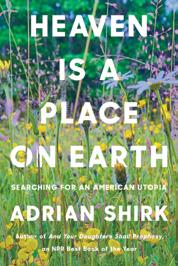
Read the full articles and keep up on the latest from campus and beyond at pratt.edu/news.
Pratt’s Class of 2022 was celebrated in an exuberant gathering at Radio City Music Hall on May 18, commemo rating the accomplishments of more than 1,100 graduating students. The 133rd Commencement was the first to be held in person since 2019 due to the disruptions of the pandemic. It was also live-streamed for graduat ing students, friends, and family who were celebrating remotely.
“Your time at Pratt is only em bryonic, and we hope and we know it will grow into a lifelong engage ment with your alma mater,” Pratt President Bronet said in her opening remarks, congratulating the students on their achievements. “Pratt is your home. It will always be part of your lives, and I hope that you cherish your Pratt experience as much as we have valued your presence, your in sight, your contributions to all of us.”
Pratt bestowed honorary degrees upon three leaders in their fields whose work embodies the innovation and creativity promoted by the Insti tute, including architect and educa tor Toshiko Mori (Doctor of Fine Arts), who was also the Commencement speaker; fashion designer Byron Lars (Doctor of Fine Arts); and Carter Burwell Emmart (Doctor of Science), director of astrovisualization for the American Museum of Natural History.
The graduation speakers includ ed Shakti Bhagchandani, adjunct associate professor of film/video, who was named Distinguished Teacher (2022–2023). Bhagchandani was honored with a medal designed by Joanne Wu, BID ’24. Julia Grippo, BFA Communications Design ’22, and Kassandra Ruiz, MFA Communi cations Design ’22, were the elected student speakers. The program also included students from the class of 2023, Katie Rose Gurkin, MFA Com
munications Design, and Leo Kim, MPS Arts and Cultural Management, performing a soulful rendition of Pratt’s alma mater on acoustic guitar and cello, and recognition of mem bers of the class of 1972 on the 50th anniversary of their graduation.
Pratt Fashion’s Long-Awaited Return to the Runway
For the first time since 2019, the annual runway show spotlighting the graduating fashion students returned to an in-person event. Themed Homecoming, this year’s Pratt Shows: Fashion curated showcase was held in Building 77 at the Brooklyn Navy Yard on May 5.
The 22 students selected to show their work presented collections responding to sustainability, identity, the future, body inclusivity, and how design can engage with global issues from the isolation of the pandemic to natural disasters.
This was the first Pratt runway show staged in the Navy Yard, part of Pratt Institute’s evolving relationship with the former shipbuilding hub that is now a center for local creativi ty and industry.
The Pratt Manhattan Gallery is now open to the public, welcoming visitors to its inviting new groundfoor space. The new gallery space was created as part of the extensive Pratt Manhattan building renova tions completed in spring 2021, with the aim of inspiring and energizing creative collaboration and explora tion within the Pratt community, as well as enhancing its visibility and engagement in the vibrant Chelsea art scene. With a wall of foor-toceiling windows facing 14th Street, the gallery is readily accessible and visible to the public.
“Our newly renovated space is a great achievement for Pratt Insti tute,” says Director of Exhibitions Nick Battis. “It took a few years to get it underway, and then a few more where we had to pull back due to the pandemic. But it was worth wait ing for this beautiful space on the ground foor that can support Pratt’s educational goals by presenting cross-disciplinary expressions at the intersection of art, design, science, and new technologies.”
Pratt Awarded Full Membership in NCAA Division III
Pratt Institute’s Cannoneers will now be competing as full members of the National Collegiate Athletic Association (NCAA) Division III. The acceptance was recently announced by the NCAA III Membership Com mittee. This makes Pratt eligible to compete against over 400 Division III institutions around the country and participate in NCAA Championships. Pratt is one of the few schools in the Association of Independent Colleges of Art and Design (AICAD) to offer intercollegiate athletics at this level.
The Mellon Foundation has awarded the Pratt Institute School of Informa tion $600,000 to support the Digital Preservation Outreach and Education Network (DPOE-N) in collaboration with the Moving Image Archiving and Preservation Program (MIAP) at NYU Tisch School of the Arts.
This grant extends the 2020–2022 award from the Mellon Foundation to 2024, bringing the total support for DPOE-N by the Mellon Foundation to $1.2 million over four years.
DPOE-N is motivated by the press ing need for libraries, archives, and museums (LAMs) to collect, preserve, and provide access to born-digital ma terials to fully refect today’s digital
—Toshiko Mori, 133rd Commencement keynote speaker, to the class of 2022
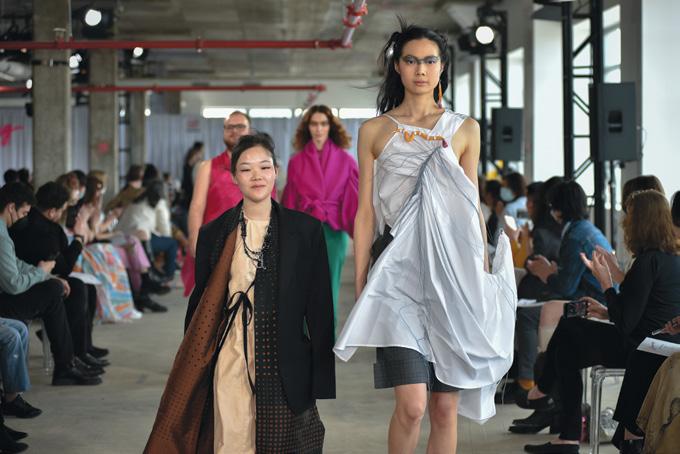

“Celebrate your diverse identities, promote your radical curiosity, and think of now as a time of immense opportunity for new initiatives and inventions....Be the light for the world that greatly needs your help.”Dan Li (above left), winner of the Christopher Hunte “On Point” Award, at the 2022 Pratt Shows: Fashion. Photo by Fernando Colon
Addison Vawters, Congressman Hakeem Jeffries, IMPAACT Brooklyn Executive Director Bernell Grier, Pratt Center Senior Program Manager Rebekah Morris, Cypress Hills LDC Program Director Ryan Chavez, Pratt Center Interim Director Lena Afridi, Pratt Institute President Frances Bronet, and Pratt Center Communications Associate Elmo Tumbokon.
Deniz Gonel, BFA ‘24
world. With this grant, DPOE-N will continue to offer professional devel opment support and workshops to LAM professionals across the United States as it has since 2020. It will also begin a new initiative to provide professional development to primar ily Spanish-speaking communities within the United States, which will include holding workshops in San Juan, Puerto Rico.
Donna Heiland Named Provost Pratt Institute named higher educa tion leader Donna Heiland as its next provost following a comprehensive national search process. Since July 1, 2021, Heiland had acted as interim provost, succeeding Kirk E. Pillow, after having joined Pratt as associate provost for academic affairs in 2016, and becoming vice provost in 2017. Heiland assumed the new role effec tive April 18, 2022.
From January 2022 through the time of this writing in August 2022, a num ber of academic leaders assumed posts across Pratt Institute.
In the School of Architecture, Quilian Riano is currently serving as Interim Dean, stepping into the role prior to the fall semester from his position as Assistant Dean. Audrey Schultz was named chair of construction management, facilities management, and real estate prac tice, assuming the role in July 2022. Stephen Slaughter was named chair of undergraduate architecture; he assumed the role in July 2022.
Ellengold Goodridge was named assistant dean of the School of Con tinuing and Professional Studies; she assumed the role in August 2022.
In the School of Design, Eric O’Toole, BID ’89; MFA ’13, was announced as School of Design assis tant dean, assuming the role in July 2022. Gaia Hwang was named chair of graduate communications design, assuming the role in January 2022. Ignacio Urbina Polo was named chair of Industrial Design, assuming the role in July 2022.
Helio Takai was named the new dean of the School of Liberal Arts and Sciences, transitioning from his previous role as interim dean in June 2022. Also in the School of Liberal Arts and Sciences, Gina Marchetti was named chair of humanities and media studies, assuming the role in August 2022.
Alumna Jane Nord Creates Pratt’s First Named Professorship to Culti vate the Next Generation of Fashion Designers: The $3.5 million-dollar Jane B. Nord Professor of Fashion Design, the first named academic position in the Institute’s 135-year history, will be a rotating position to attract and retain visionary fashion educators to Pratt.
New Diamonstein-Spielvogel Fel lowship Program Will Bolster the Study of Climate Change in Archi tecture and Design: The fellowship program, made possible through the generosity of the Diamonstein-Spiel vogel Foundation to honor President Emeritus Dr. Thomas F. Schutte, will advance pathways for diversity in climate change scholarship.
Pratt>FORWARD Transports Its Mentorship of Emerging Artists to Newlab: The 2022 edition of the Pratt Fine Arts program offered studio space and a month of intensive col laboration in the Brooklyn Navy Yard.
Pratt and Partners Awarded $1.9M in Federal Funds for Affordable Small Home Sustainability: President Biden signed the bill including community impact funding for an initiative developed by Pratt Center to reduce energy consumption and costs for small homes in Brooklyn and Queens.
Projects Addressing Local and Global Challenges Honored with 2022 Research Open House Awards: The fifth year of the annual event rec ognized groundbreaking research projects from across Pratt Institute.
NYCxDESIGN Brings Student Work to the Center of Times Square: The 2022 edition of the design event included an interactive infatable installation drawing attention to plastic waste.

IDC Foundation Awards a $1,000,000 Grant for Pratt’s Research Accelera tor Hub at the Brooklyn Navy Yard: The funding supports three initia tives at the Research Yard of Pratt In stitute, City Tech, and the Brooklyn Navy Yard, now under construction.
For more on these stories and the latest updates from Pratt, visit pratt.edu/news.
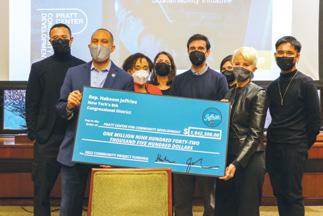
1.
by Alexander Fury (Assouline)
Jeremy Scott, BFA Fashion Design ’95; Design by Dylan Brackett, BFA Communications Design (Graphic Design) ’20
This richly illustrated 360-page volume highlights the world of Moschino through the lens of Jeremy Scott, who came on as creative director of the Italian fashion house in 2013, bringing his playful, irreverent style to redefine the label. Designed in close collaboration with Scott, featuring images from runway shows, editorial shoots, red carpets, and more, Moschino is “a photography book from a master of the Instagram moment” (Vogue) Available at assouline.com

2.
by Hannah Candle Bonam Kim, MFA Fine Arts ’16

With designs drawn from the human form, Bonam Kim’s brand, Hannah—which means “one” in Korean and evokes happiness, grace, and illumination in other languages—creates sculptural candles inspired by those tender qualities. Each candle is handcrafted in Kim’s Brooklyn studio from 100 percent organic bee and soy wax with a result that is both art object and functional decor. Available in five colors, lavender, sage, sand, white, and blush pink, at hannahcandle.com
3. Mickalene Thomas, with texts by Roxane Gay and Kellie Jones (Phaidon) Mickalene Thomas, BFA Fine Arts ’00
The first monograph on Mickalene Thomas, created in collaboration with the artist, covers the expansive territory of Thomas’s career over the past two decades. The 288-page book, “a powerful retrospective of one of the most versatile and influential creatives today” (Elle Decor), was published as Thomas’s first global exhibition, Beyond the Pleasure Principle, opened at Lévy Gorvy galleries in New York, London, Paris, and Hong Kong and Galerie Nathalie Obadia in Paris last fall. Available at phaidon.com


4.
Nicole Infante, BFA Communications Design ’97, and Adrienne Infante, BFA Fashion Design ’01
Inspired by a shared love of hosting elegantly crafted dinner parties, LA-based sisters Nicole and Adrienne Infante recently launched their brand Feast of Burdens, offering “maximalist table dressings for the minimalist host.” With style notes from ’70s tablescapes, their line includes fancifully embroidered napkins and tablecloths with bold geometric patterns and graphic flourishes. Available at feastofburdens.com
and Sanpaku, Kate Gavino’s new graphic novel about three Asian American friends navigating New York City publishing from the entry level is “a charming ode to idealism and realism, and what happens when the two inevitably intersect” (Maris Kreizman, author of Slaughterhouse 90210). Avail able at penguinrandomhouse.com.

This year, alt-rock duo They Might Be Giants celebrated 40 years of bandhood—from the time John Flansburgh, one half of the pair, was studying fine arts at Pratt. Coinciding with this milestone, the band released a new multimedia project, BOOK: a 15-song album, released in vinyl, CD, cassette, and digital formats, accompanied by a 144-page print volume featuring song lyrics artfully set by graphic designer Paul Sahre and original photography by fellow Pratt alum Brian Karlsson. Available at tmbgshop.com
For followers of Catalina Parra’s studio, Base Ceramics, this playful mug is a perennial favorite, dotted with tactile globes and glazed in a range of colors to awaken the senses. The bubbly motif has appeared on vases, jars, and planters as well, alongside Parra’s range of other pieces for the home, all handmade in Brooklyn through a process of slip casting. Available at baseceramics.com
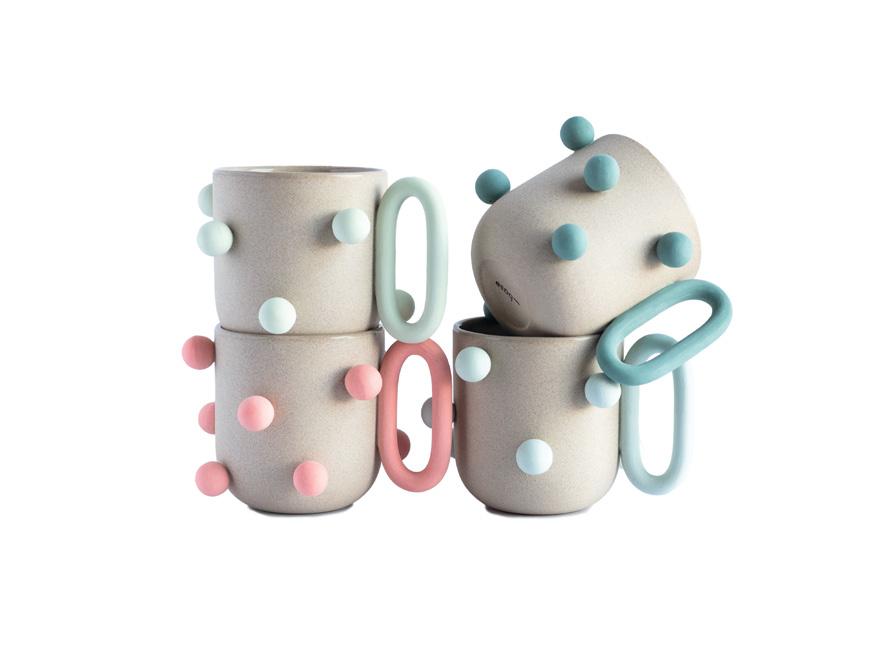

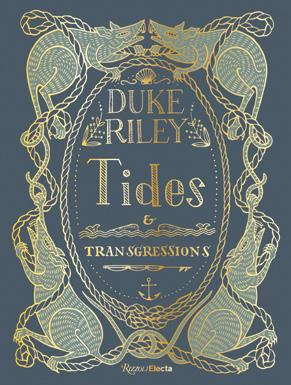
Duke Riley, MFA Fine Arts ‘06
The first monograph from Duke Riley arrived as the multimedia artist’s exhibition DEATH TO THE LIVING, Long Live Trash, which confronts the impact of plastics waste on waterways, opened at the Brooklyn Museum in June (running through April 23, 2023).
The volume surveys more than two decades of Riley’s wideranging nautically oriented work, from drawings and sculptures to installations and performances engaging provocative ecological and political themes. Available at rizzoliusa.com
Learn how a charitable gift, like a bequest in your will or living trust, or even a gift from your IRA, can enhance your personal legacy goals. Your commitment today supports the creative minds of tomorrow.

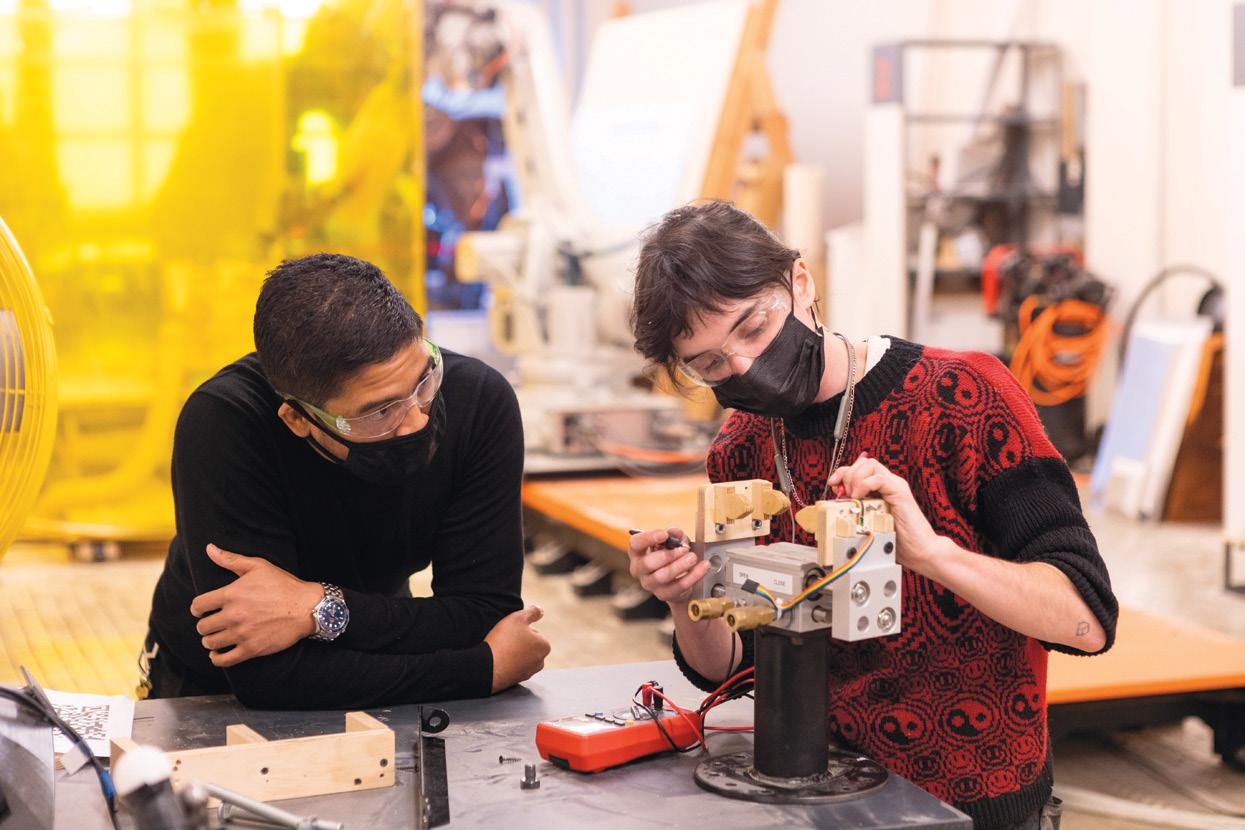
Contact Robert M. Danzig, Director of Planned Giving, at rdanzig@pratt.edu or 718.399.4296 to discuss gift strategies that can help you support Pratt Institute while also providing significant benefits to you and your family.

Pratt
have benefitted from the legacy and generosity of those who came before them.


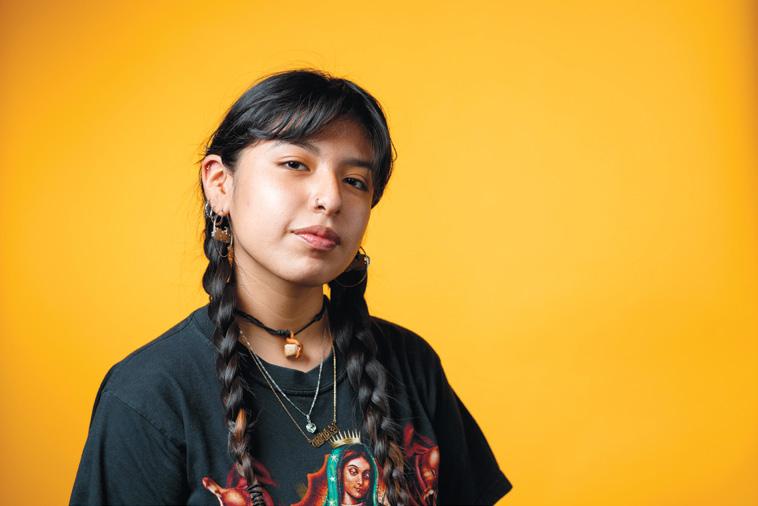
success, access to world-class faculty, and an environment that is unique and cross-disciplinary.

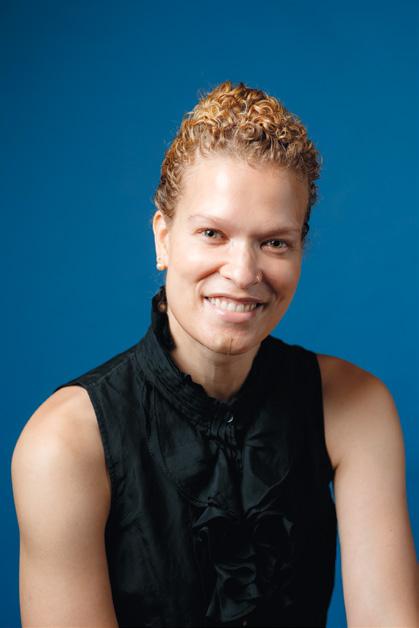
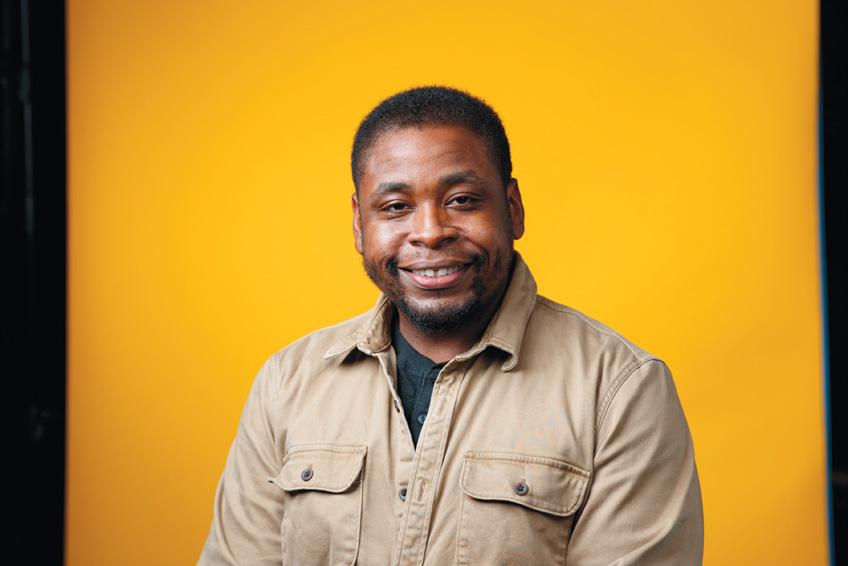
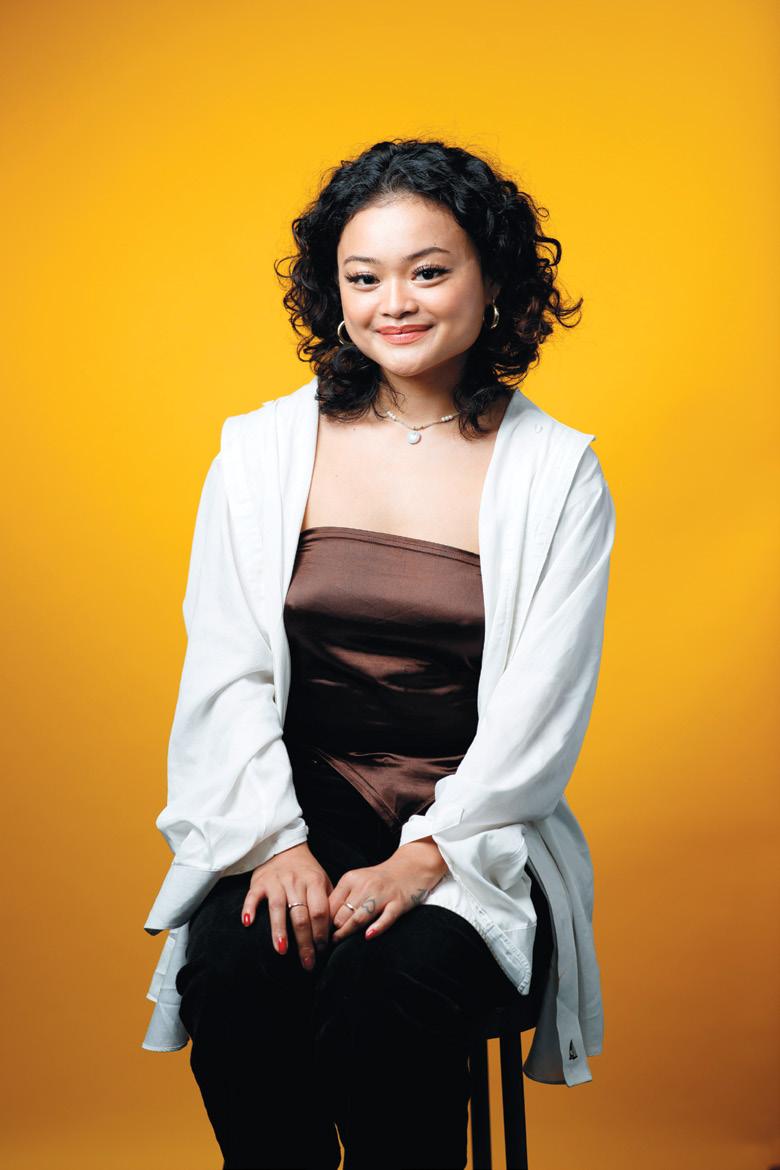


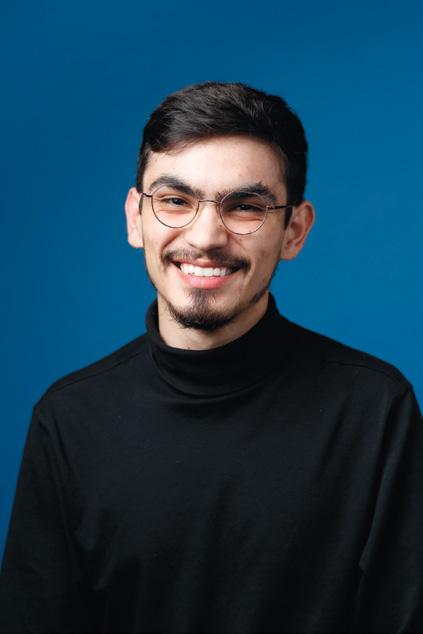

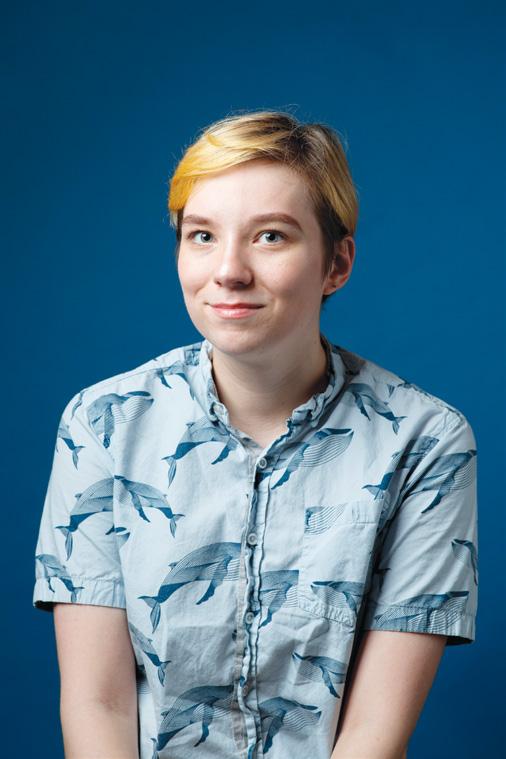

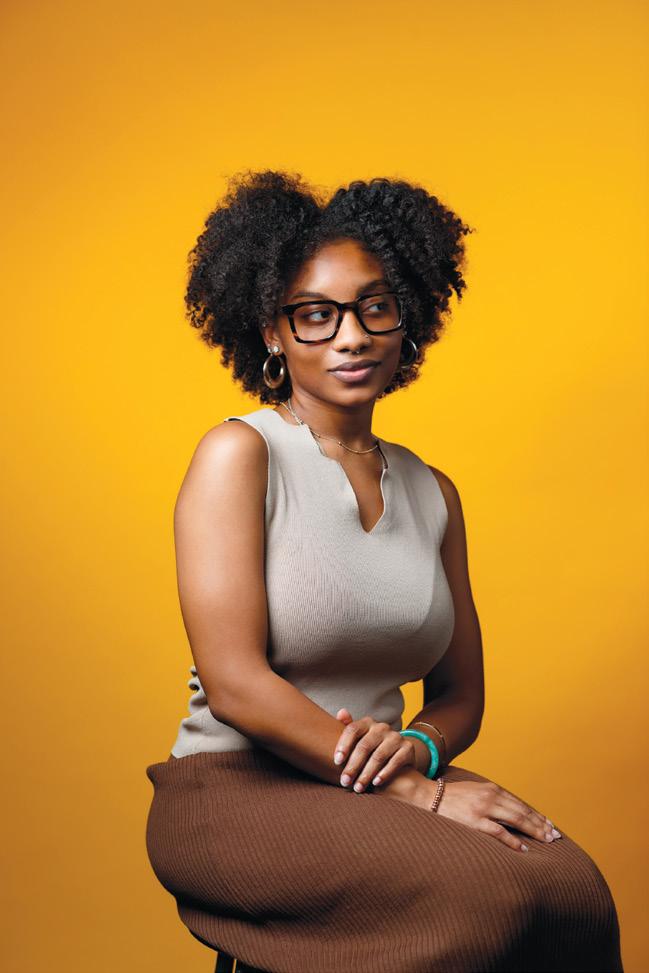

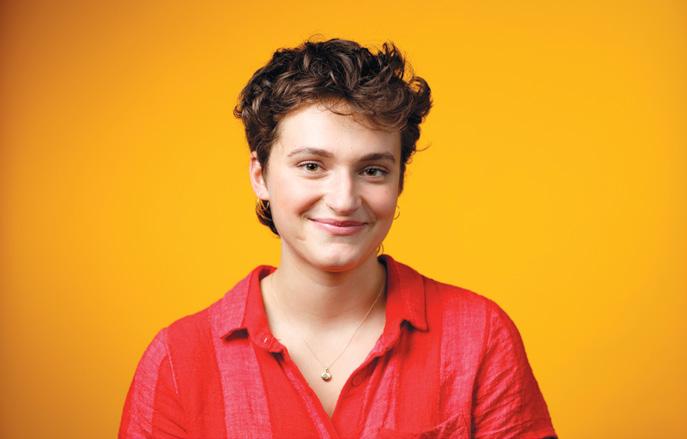

Scan the QR code to make your gift online at giving.pratt.edu.

Pratt alumni, share your news and updates with your fellow graduates. See page 61 for Class Notes submission guidelines.
Dolores Heinze, Certificate, Costume Design ’51, now retired, shares that she worked for 35 years as a sales rep resentative in New Jersey, selling pic ture frames and representing many artists as well. She is still in touch with a few former customers and says, “I miss those days very much. Being in a different art gallery (or frame shop) every day is a wonderful job to have.”
Stan Nitzky, BArch ’55, writes that he has lived in Woodstock, New York, “where the festival wasn’t, since 1977.” He married his wife, Bette, in 1973, and they have two sons and three grandchildren. Nitzky worked as a project director for SLS Environetics, where he did projects for United Air craft, Otis Elevator, Van Heusen, etc. Now he is retired and volunteers as a mentor for SCORE, which does free business counseling. He would enjoy hearing from friends from the classes of ’54 and ’55 and can be reached at 845-679-2123 and bsnitzky@gmail .com
Henry Sanoff, BArch ’57; MArch ’62, AIA, published the book Search ing for a Voice. He writes, “This autobiography begins with early personal educational experiences in an unfamiliar territory that led to the development of the methods to expand the boundaries of traditional thinking. An expanded vocabulary was necessary to make the unfa miliar familiar. New and improved methods, some of which were bor rowed from other disciplines, were developed to integrate the human dimension into the decision-making process I describe as democratic design. Decades of my personal academic and professional journey
are described through confronting challenges to overcome.” The book is available at amazon.com/author /henrysanoff
Richard W. Simpson, BA Advertising ’58, writes that he is living in Lancaster, Pennsylvania, “and the best part is that Abe Rudisill, a fellow classmate, lives just down the road. We have fun remembering our days at Pratt. In retirement, Abe has created amazing found-art sculptures. We look forward to an exhibit of these works in NYC soon. As for me, with my love of history, I have given over 200 lectures on the American Civil War. We are both 88. If any of our classmates are still out there, Abe and I would love to hear from you.” Simpson’s email is dicksimpson@comcast.net
Karnig Alajajian, AAS ’60, works in real estate and makes paintings during weekends, and is open to exhibiting work.
Richard D. Miller, PE, BME ’61, writes, “if you love what you are doing (I do), you are not inclined to retire. The world of engineering in the building construction industry is inclusive of ever-emerging technolo gies. However, fundamentals remain unchanged. Going forward, learning these basic essentials at Pratt will bode well for you in all your future career decisions.”
Hugh Lifson, MFA Art Education ’62, exhibited recent paintings and drawings in a one-person show at the Hudson River Gallery in Coralville, Iowa. The show is titled Chelm and Tzfat, and explores the architecture of these two places.

Cynthia Maris Dantzic, MFA Art Education ’63, is now senior profes sor emerita of visual arts at Long Island University. Dantzic had work in three exhibitions last spring: a photograph, Pink Flamingo and Reflections, with the Sierra Club Photo Group; a painting, Overleaf #2; and a drawing, Is That a Smile? Self-portrait, at two exhibitions at the National Arts Club. She also has four children’s books published: An imal Haiku Rhymes, Animal Haiku Rhymes Too, More Animal Haiku Rhymes, and Floral Haiku Rhymes, written in cursive handwriting, illus trated by Virginia Hoyt Cantarella.
Jackie Jayne, BS Art Education ’65, created a piece of art every day for 175 days during the onset of the COVID-19 pandemic. She used what ever materials she could access and shared pieces with friends, even sell ing a dozen works. Now, having taken time off from making art every day, Jayne is a member at a pottery studio but feels inspired to make more 2D work again. “I say to my classmates,
Tony Costello, FAIA, BArch ’66, was honored by AIA Indiana, awarded its first-ever Architect Humanitari an Award, as recommended by the 2021 annual design awards jury. The award recognizes Costello’s 12-year effort as the campus planner and ar chitect and principal of C+A Costello + Associates for the first five build ings on the Our Lady of Perpetual Help campus in Plaine-du-Nord, Haiti. The jury recognized Costello’s steadfast commitment to overcome numerous man-made and natural disasters in achieving the campus plan and buildings that incorporate sustainable and disaster-resistant construction methods.
Claire Jeanine Satin, MFA Sculpture ’68, had works exhibited at the Art and Culture Center Hollywood in Florida in BOOKBOUND: The Art of Books and Printmaking from June 11 to August 21, 2022. Satin was awarded a Louis Comfort Tiffany Foundation Grant upon graduation from Pratt, three artist residencies
BArch ’69, CEO of Gallo Herbert Ar chitects, was honored by the Florida legislature and Florida AIA with the Citizen Architect Award. Gallo has a long history of service to his com munity. He is chair and founding member of the Nova Southeastern University Halmos College of Natural Sciences and Oceanography Advi sory Board; is a member of the city of Lighthouse Point Planning and Zoning Board; is a board member of Broward Workshop; is a volunteer pilot for Angel Flight; was nominated as corporate sponsor of the year for Nova Southeastern University; and is a contributing editor and columnist for The Light magazine.
Jeanne Balsam, BFA Fine Arts ’70, writes that since graduation, she has been involved in a number of artistic pursuits, among them the writing and illustrating of children’s
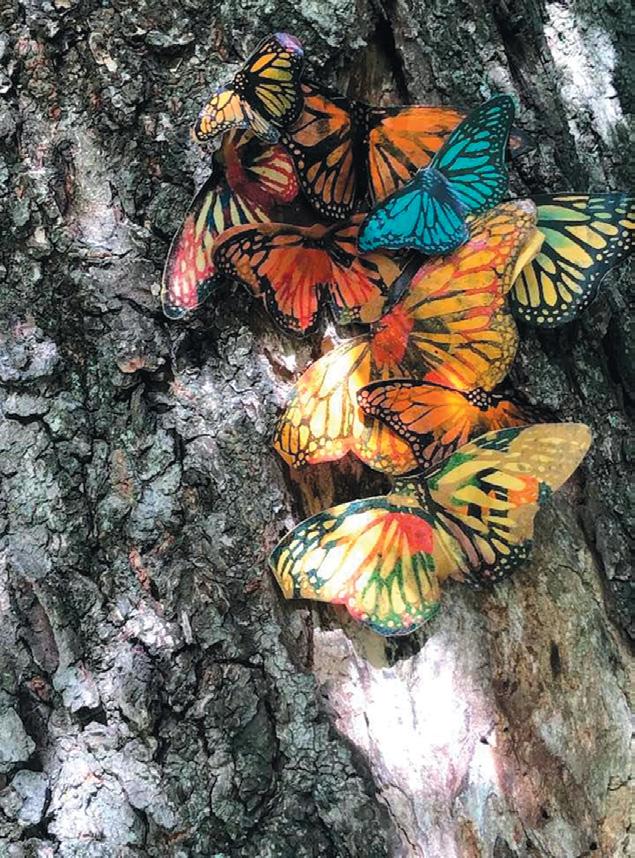

books. After many years of submis sions as an author and/or illustrator, her debut picture book, Where Do Butterflies Go at Night? has been published by Ethicool Books. Balsam is the author with illustrator Stella Maris-Mongodi. Butterflies is now available online and in bookshops everywhere. The story, in rhyme, is a child’s rich imaginings of where butterfies actually go when shadows grow long, and his eager anticipation of their return in the morning.
Anne Dushanko Dobek, MS ’70, has two works in Evanescent, an outdoor exhibition at duCret School of Art, curated by artist in residence Jo-El Lopez. The yearlong exhibition wel comes visitors to walk the expansive grounds while locating the sculp tures, all of which are sited on tree stumps or in trees. The pieces are Parallel Migrations XXVII, part of a decades-long series that confates the plight of migrants and refu gees with the perilous journeys of monarch butterfies, and Remains of the Day, the first in a new series that invites conversations on the signifi cant losses of both plant and insect species due to climate change.
Ron Sekulski, BID ’71, shared a new collection of sculptures, which can be viewed on his website, sekulskiart.com, and writes, “there are many rich and intriguing oppor tunities that I find inspirational. Nature, our humanness, and social and political issues can drive motiva tion. My passion is interpreting a host of provocative concerns into beau tiful artistic expressions, whether joyous sculpture or functional art.... Striving to achieve perfect masterful artistry combined with contempo rary style and emotional connected ness, traditional techniques do not bind me; I chose to employ various construction methods and materials to complete the aesthetic and func tionality of my art and design.”
Constance A. Smith, BFA ’71; MID ’73, has a new book, The Women of Gen eral Motors: A Century of Art and Engineering (2022), featuring numer ous Pratt graduates from 1950 to the present. From Bonnie Lemm, the first woman engineer-designer at GM, to Mary Barra, the current chair and CEO, this heavily illustrated GM his tory explores the role of more than 140 women, some known and others unknown, contributing to worldwide production of products and trans port for a span of 100 years. Smith won both national and international awards for her previous book, Dam sels in Design. More information is available at schifferbooks.com
Marc J. Leotta, AIA Associate, BArch ’72, based in Malibu, California, has for the last five years participated in the Los Angeles AIA–sponsored Professional Volunteer Program, where a group of individuals trained in urban design, architecture, and city planning meet weekly to review some of the largest proposed develop ment projects for Los Angeles. They evaluate the projects based on the three Los Angeles City Planning Com mission design criteria of pedestrian experience, 360 design, and climate adaptability. The city planners then take the group’s input and go back to the developer and their architects to try and achieve a better overall project.
Saberah S. (Hafeez) Malik, MID ’72, had works included in several recent exhibitions: Luminous at Dedee Shat tuck Gallery, Westport, Massachusetts (2021); Oneness and Togetherness at
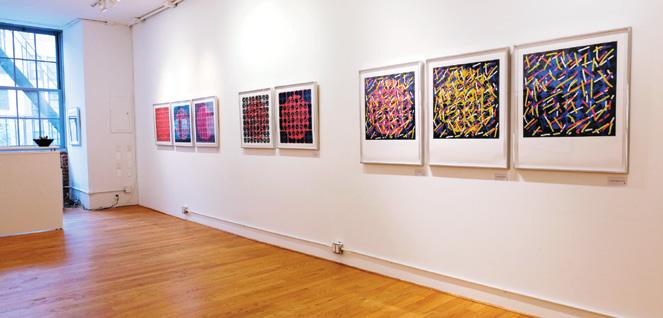
WAH Center in Brooklyn (curator, Yuko Nii, 2021); and Bountiful and Habitats Unknown in the Newport Art Museum Biennial 2022 in New port, Rhode Island. Malik partici pated in the Danforth Annual Juried Exhibition at the Danforth Museum, Framingham, Massachusetts. In July, her works Below the Surface II and Synergy II Project were presented at the University of Rhode Island Prov idence Feinstein Campus Gallery. Synergy II is a collaboration between the MIT/Woods Hole Oceanographic Institution Program in Oceanogra phy scientists and Art League Rhode Island elected artists, interpreting ocean data through art.
George Ranalli, BArch ’72, had a residential project highlighted on The Plan, showing how a revised layout transformed a 90-year-old apartment in “The Towers,” on 24th Street in Manhattan, into a stylish residence. Among other coverage of the work of his Harlem-based firm George Ranalli Architect, Ranalli was profiled in Real Creative Magazine.
Philip Gefter, BFA Fine Arts ’73, pub lished a biography of Richard Ave don, What Becomes a Legend Most (Harper), the first definitive biogra phy of the renowned 20th-century photographer. Dwight Garner, chief book critic of The New York Times said of the book: “Wise and ebullient...
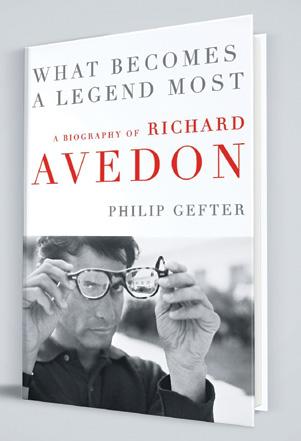
Gefter takes the reader inside so many of Avedon’s photo shoots, and so deftly explicates his work, that you’re thirsty to sate your eyes with Avedon’s actual images.” Gefter is also the author of Wagstaff: Before and After Mapplethorpe (Liveright), which won the 2014 Marfield Prize, a national award for arts writing, and Photography After Frank (Aperture), a collection of essays. His website is philipgefter.com.
Donald Loggins, BFA Art and Design Education ’73, has a photo in Silence Prevails: Lower East Side Community Gardens During the Pandemic, an installation by Aki Onda, at MoMA PS1. The work is on view through January 16, 2023, as part of the exhibition Life Between Buildings, about the history of com munity gardens in New York City and how artists have engaged interstitial urban spaces. Artists in the exhibi tion include Mel Chin, Danielle De Jesus, Niloufar Emamifar, Becky Howland, David L. Johnson, Gor don Matta-Clark, Margaret Morton, Poncili Creación, Matthew Schrader, jackie sumell and The Lower East Side Girls Club, Cecilia Vicuña, and Jack Waters and Peter Cramer.
Michael Garland, BFA ’74, an author and illustrator of children’s picture books and a fine art painter, has two new books out in 2022: Zombie Phone Kids (Boys Town Press) and Grandma’s Farm (Astra Publishing). This past spring, Garland participat ed in ARTmostNY, a regional open studio in the Pawling, Patterson, and Poughquag, New York, area. Four of his paintings were selected by the jury to be included in the Great Hollow Art and Photography Show in New Fairfield, Connecticut, in May 2022.
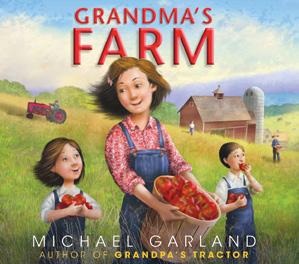
Michael Zenreich, BFA Fine Arts Painting ’74, had his third solo show, Just a Song, exhibiting recent artwork
Clockwise from top left : Cover of book by Philip Gefter ’73. Cover of book by Michael Garland ’74. Installation of Just a Song , 2021, a solo exhibition of work by Michael Zenreich ’74
Bottom right : Beatrice M. Mady, It’s All in the Heat , 2021, oil on canvas, 48 x 36 inches
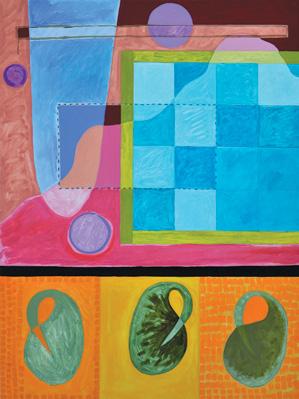
Fashion design alumnus Emilio Sosa was nominated for a 2022 Tony Award for Best Costume Design of a Play, for Trouble in Mind. The 1955 Alice Childress comedy-drama, centered on a veteran Black actress rehearsing for a Broadway production, made its long-awaited Broadway debut just last fall, staged at Roundabout Theatre Company through January 9, 2022. Variety praised Sosa’s “dazzling costume design [that] dresses the cast in colors that amplify their skin tones and conjures the era by prioritizing elegance and formality.” Sosa is chair of the American Theatre Wing, and his other Broadway credits include Skeleton Lady Day at Emerson’s Bar and Grill; The Gershwins’ Porgy and Bess, for which he received a Tony nomination; and Topdog/Underdog.

at Pleiades Gallery in Chelsea from October 19 to November 7, 2021.
C Bangs, MFA Fine Arts ’75, and her partner, Greg Matloff, a light-sail physicist on the advisory committee for Breakthrough Starshot, collab orated with former HoloCenter director Martina Mrongovius on an exhibition of holography in space installed on Alpha CubeSat, a small spacecraft developed by a team at Cornell. A concept inspired by the Pioneer Plaques and the Voyager Golden Record of the 1970s, the holo grams contrast the robotic aesthetic of most spacecraft, and serve as a representation of life on earth. Four of the holograms affixed to Alpha CubeSat were anticipated, at the
time of this writing, to be launched into space this year.
Steven Bleicher, BFA Fine Arts ’77; MFA Fine Arts ’79, has a new foun dation textbook, Art and Design Fundamentals, published by Oxford University Press. There are two vol umes. Book one contains conceptual thinking, principles, elements, and color, and a full chapter on digital color. Volume two includes all of the above and five chapters on 3D, including time-based and new media artworks.
Beatrice M. Mady, MFA Fine Arts ’78, exhibited paintings and digital prints in multiple venues in 2022. Her painting Matter Exists as Particle
and Wave was part of the Magnificent Color show in Watchung, New Jersey. Her painting Borrowed Time was in The Healing Power of Color, pre sented online by the Healing Power of Art and Artists. A solo show last spring at the Watchung Arts Center in Watchung, New Jersey, featured new paintings and digital prints. Her painting It’s All in the Heat is in the New Jersey Arts Annual 2022: Reemergence, at the New Jersey State Museum through April 30, 2023. Mady’s website is beatricemady.com
Meryl Taradash, MFA Fine Arts (Painting) ’78, has her wind-driven sculpture Sisyphus in the group ex hibition Personal Structures, curated by the European Cultural Center (ECC) of Italy. Sisyphus will be displayed until November 27 in the Marinaressa Gardens in Venice. ECC organized the exhibition in parallel to the 2022 Venice Biennale to broad en the scope of making art accessible to all. By inviting creative minds from around the world to explore the exhibition’s “theme of refection and showcased in projects throughout the city, the curators envisioned that the act of refecting carries the potential to foresee possibilities and the responsibility of imagining a better future.”
Larry Matthews, BFA Communica tions Design ’79, received an Ozzie award, presented by Folio:, for the Jan uary 2019 cover of The CPA Journal
Selahattin Bucak, MArch ’80, pen name Sal Atlantis Phoenix, will have his novel Destiny of a War Veteran republished by Gotham Books.
Nanci Hersh, BFA Fine Arts (Draw ing) ’81, had a solo exhibition of acrylic paintings from her series Unmasked: Portraits from the Zoom Room at the Nilson Gallery, Mon mouth Museum, Lincroft, New Jersey, in May and June 2022. Many,
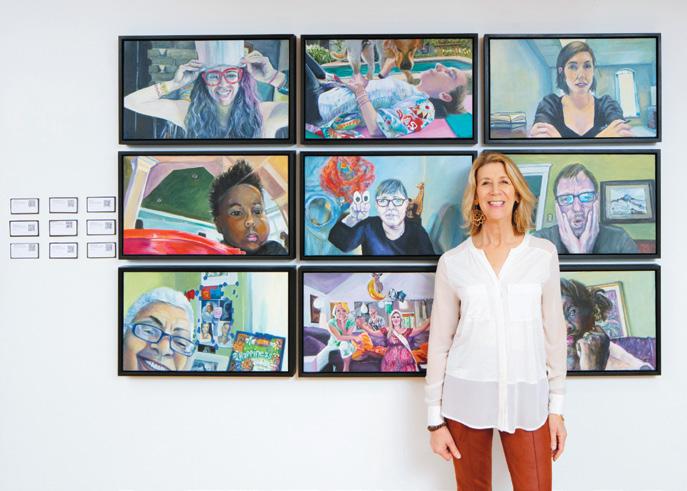
if not most, of the subjects are artists, educators, and others that she shared space with in her recent role as exec utive director of Delaware Institute for the Arts in Education. Hersh has taken the challenges of the past 24+ months and transformed those seemingly endless Zoom meetings into works of art. To date, there are 28 “Zoom Room” portraits in total.
Frank Mann, MFA Fine Arts (Paint ing) ’82, was recognized with an Albert Nelson Marquis Lifetime Achievement Award from Marquis Who’s Who, which announced the honor in The Wall Street Journal
Richard Koenig, BFA Photography ’85, has been working on a project, City as Metaphor, with the Pratt neighborhood as its focus. Koenig revisits locales where he made


Clockwise from top right : Nanci Hersh ’81 with paintings in her solo exhibition Unmasked: Portraits from the Zoom Room , 2022. Diptych by Richard Koenig ’85 from his project City as Metaphor, showing Myrtle Avenue in 1981 and 2021. Meryl Taradash ’78, Sisyphus , restored in 2021, aluminum and stainless steel, 9 x 11 x 4 feet

photographs several decades ago; a contemporary, high-resolution image is then made, framed to mimic the prior photograph. The updated view is then combined with the vin tage analog work to form a straight forward diptych. The goal is to show how things may have changed over a long period of time to be sure, but while the image duos describe changes based on physical appear ances, it is hoped that a refection of a deeper sort may be elicited.
Deborah Porter Glenn, MS Com munications Design ’88, is an artist, designer, photographer, and cre ativity life coach. Glenn’s website is glenportlife.com
Rachelle Krieger, BFA Fine Arts ’89, had paintings and ceramics featured in a solo booth with Susan Eley Fine Art at the VOLTA NY art fair in May 2022.

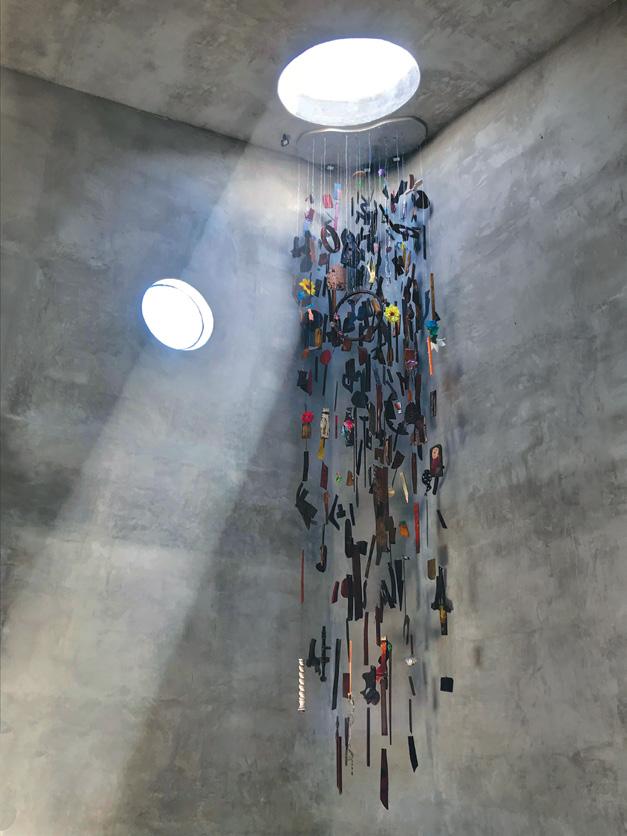
Sook Jin Jo, MFA Fine Arts ’91, pub lished the photobook Traces with Noonbit Publishing in Seoul. Jo also completed Art House Chapel II in San Andres Itzapa, Chimaltenango, Guatemala, “embodying a spiritual place where anyone is welcome to find healing, hope, and inspira tion.” At the Jeju Museum of Con temporary Art in Korea, Jo installed Witness II, a new sound and video piece that engages visitors to interact with three-dimensional sound.
Andrew Thompson, AIA, NOMA, BArch ’91, was awarded the AIA-NJ Architect of the Year for 2021 by the AIA New Jersey chapter. Thompson
has served as past president of the Newark and Suburban section of AIA-NJ as well as past president of NYCOBA-NOMA. He has also served on the board of the National Organi zation of Minority Architects (NOMA)
as the past regional vice president for the Northeast region of the United States. Thompson is currently the Passaic County architect, based in Paterson, New Jersey. Projects involve new construction, energy projects, and historic rehabilitation of buildings on the National Register of Historic Places.
Stephanie Alton, MFA ’92, had her film Yupitt: Eye of Both Worlds rec ognized with awards for best short documentary at the Santa Fe Film Festival and best Native American film and best original music at other film festivals during her festival year, as of June 2022. The film takes place in a Yupik Alaskan village, with the young singer-songwriter Byron Nicholai. Nicholai is helping a new generation forge a stronger connection to their cultural heritage using rap and beatboxing. The film is a glimpse into Yupik life and the
community’s need to continue to live a subsistence lifestyle while dealing with grief.
Joseph Caserto, BFA Communi cations Design ’92, won three 2021 American Graphic Design Awards from GDUSA magazine. Two entries are features from ADDitude zine, and the other is a holiday greeting card. His projects are among the 10 percent of more than 10,000 entries selected to receive Certifi cates of Excellence, and winning more than one is rare. The competi tion has chosen Caserto’s work for 14 consecutive years. GDUSA published the winners in December 2021 in the printed 58th Anniversary Design Annual, the website and mobile showcase, and the digital edition.

Kevin B. Huang, BArch ’93, present ed his collection of “Story Balls” at his Wind Challenge exhibition in Philadelphia, in October 2021. His work explores the use of found and reclaimed materials to tell the real

or imagined stories of those mate rials and the people to whom they belonged for this prestigious solo exhibition presented at Fleisher Art Memorial. He sold 70 percent of the pieces during the course of the exhibition.
Natalia Garcia-Lee, BFA Fine Arts (Sculpture) ’95, had a solo exhibi tion, The Measure of a Man, on view from April 22 to June 25, 2022, at LnS Gallery in Miami. The exhibition showcased paintings, drawings, and Florida International University, former director of the Patricia and Phillip Frost Art Museum, Miami) and Melissa Diaz, cultural arts curator at Deering Estate, Miami.
Maya Kopytman, MFA Computer Graphics ’95, is a partner at C&G Partners, a multi-specialty creative studio that just launched an online resource that brings conserved works of art from the Kress Program in Paintings Conservation at New York University into the public view in a single place. Its powerful digital viewer based on the IIIF Image API allows users to zoom in to see brushstrokes, paint textures, and the evidence of time in detail. The resource also makes decades of scholarship available for the first time digitally and publicly, and its fexible framework allows for all future conservation projects to be documented in real time.


Jana Ireijo, MFA Fine Arts (Painting) ’99, a Hawai’i-born artist, created an ephemeral “vanishing” mu ral at Maui Ocean Center Marine Institute, The Nature Conservancy, Hawai’i, and Palmyra, to simulate coral bleaching, and a 2015 marine
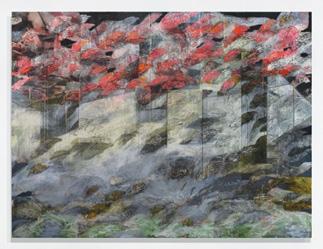
Left to right, top to bottom : Design by Joseph Caserto ’92 for ADDitude , Spring 2020. Natalia Garcia-Lee ’95, The Beautiful Ones , oil on canvas, 72 x 96 inches. A “Story Ball” by Kevin B. Huang ’93. “Vanishing” coral reef mural by Jana Ireijo ’99. Detail of pages from an online platform for the Kress Collection launched by C&G Partners, where Maya Kopytman ’95 is a partner
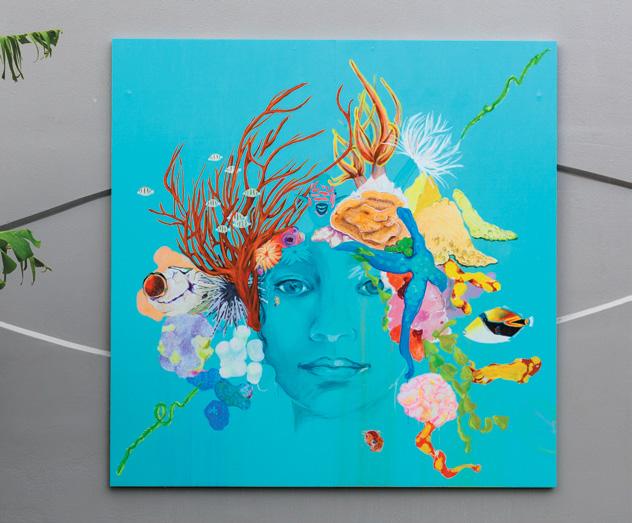
The Shirley Project Space, a new gallery opened by Sarah Shirley ’01. Yasuko Tsukamoto ’02, A View from 1605 , book work with photographs from Tsukamoto’s room at Willoughby Hall taken in 2001
Little Wing Lee, MS Interior Design ’06, was named the first winner of the Female Design Council + NICOLEHOLLIS Grant, a financial grant for BIPOC female-identified designers and architects that also includes mentorship from designer Nicole Hollis’s studio. Lee is a multidisciplinary designer working in interiors, architecture, and environmental design. She is the design director at Atelier Ace/ Ace Hotel Group, and the founder of the firm Studio & Projects as well as the group Black Folks in Design. “I’m looking forward to using a portion of the award to fund two product development projects [Studio & Projects] initiated earlier this year: a rug design collaboration and a small furniture collection,” Lee told Architectural Digest. “We’re at an infection point, and this grant will give me the opportunity and momentum to build and invest in future projects.”
heatwave in which Hawai’i lost 30 percent of its living reefs statewide. Using a combination of acrylic paint and colored chalk, the non permanent materials washed away in the elements over the course of a year (Earth Day 2021–2022). Ireijo is the founder of the collective Mural Ethos: Vanishing Murals, creating art with wildfire charcoal and earth pigments to illustrate the impacts of
climate change on vulnerable species and habitats.
Sarah Shirley, MFA Fine Arts ’01, opened up a new gallery in Prospect Heights, Brooklyn. The Shirley Project


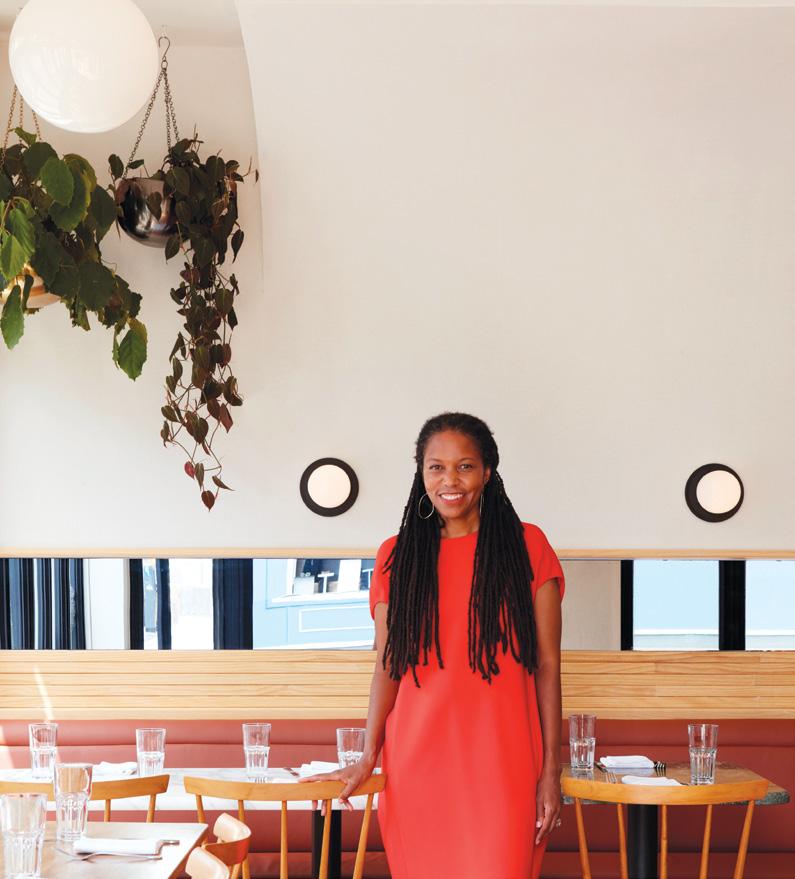
Space will be an event-driven art space with opportunities for artists, writers, and musicians to participate in salon-style events. The gallery has a focus on mid-career contemporary artists. The space will be used as an artist-in-residence space between shows. The gallery is located at 609 Washington Avenue in Brooklyn.
Yasuko Tsukamoto, MFA ’02, shared details of a recent exhibition, Ima date Art Field 2021, which specializes in Japanese paper art: “In Japan, which has been hit by many disas ters, in a warehouse with a history of more than hundreds of years, using the view from my room at Willoughby
Madelen Nyau, BFA Fashion Design ’21, winner of the 2021 Christopher Hunte “On Point” Award for her thesis collection at Pratt, won the second annual Season Zero design competition, an initiative of the Los Angeles–based retailer Fred Segal and Black in Fashion Council that supports emerging Black designers. Among entries from emerging designers across the US, Nyau impressed the judges with her brand, T1tan Studios, which “focuses on crafting luxury staples driven by curiosity in art, science, and psychology,” according to a feature on FashionUnited. The Season Zero award includes production of Nyau’s debut collection, courtesy of Mastercard, and sale of the collection at a dedicated pop-up space at Fred Segal’s Sunset Boulevard fagship as well as online. Nyau also receives mentorship from representatives at Fred Segal and Mastercard, a grant, and tools to digitally enhance her business.

Hall, I exhibited the memories of 9/11. Taking advantage of the character istics of Japanese paper, which has a history of 1,000 years, I tried to evoke people’s memories and heal the pain in our hearts.”
Camille Wainer, BFA Communica tions Design ’02, in collaboration
with composer Sanford Bender and Documinute Productions, produced a fourth film project: the short ani mation Polar Ardor in 2022. Inspired by the papercut style of early ani mator Lotte Reiniger, Polar Ardor in corporates techniques of woodblock stamping and Chine-collé printmak ing to offer an optimistic message about the importance of collabora tion and compassion in the face of an uncertain future. Meanwhile, Wainer was accepted to the University of New Hampshire’s Franklin Pierce School of Law, a top-10-ranked intel lectual property law program, joining the class of 2024.
Kristina Wedo, BFA ’06, is a se nior packaging designer at United Legwear & Apparel Co. United is an
award-winning global manufacturer and distributor of apparel, legwear, bodywear, bags, backpacks, head wear, and accessories of all kinds. It is a joint venture partner of PUMA North America; licensee of Hurley, Skechers, Champion, Van Heusen, Arrow, Fortnite, Weatherproof, and Lemon; and owner of the Pro Player, Fun Socks, and TicTacToe brands.
Michael DelleFave, AIA, MS Archi tecture ’08, was awarded the Boston Society of Architecture Award for Excellence in Teaching from the Bos ton Architectural College (BAC). Delle Fave has been a longtime employee of RODE Architects, a Boston-based team of architects, designers, and ur ban planners, having started with the firm in 2014. The award recognizes
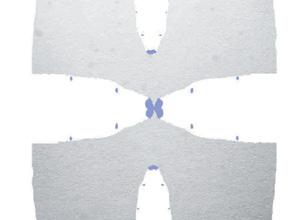
Clockwise from top left : Poster for Work , a film by April Maxey ’12. Poster design by Adrian Volz ’11. The LuminoCity Festival, founded and executive produced by Xiaoyi Chen ’17

the practice of awareness that DelleFave brings to the studio and his deep understanding of precedent and current design examples. A BAC faculty member for 12 years, he in fuses his industry experience into his classes, often sharing real projects he is working on at RODE Architects, to help students understand the process and challenges of design.
Benjamin Korman, BFA Writing ’11, is a producer and co-creator of the new podcast from The Metropolitan Museum of Art. Titled Immaterial, the series examines the worlds of art, science, and humanity through the materials of art. It debuted on May 25, 2022. Currently an independent
Adrian Volz, BFA Communications Design ’11, writes, “my poster for Ukraine was featured by my current firm, HLW, to support their phil

The poster is also on display through With Ukraine” campaign. “I designed
this poster with heartfelt prayers for peace,” Volz says. “A large ‘U’ embraces a sunfower and halftone pattern of the world.”
April Maxey, BFA Film/Video ’12, had her film Work premiere at the 2022 Sundance Film Festival, with IndieWire naming the film one of 10 shorts to watch at Sundance. Work, made as part of the American Film Institute’s Directing Workshop for Women, also screened this year at Outfest Fusion, the Queer Women of Color Film Festival, and the Tribeca Festival.
Alex Behnke, MArch ’16, is currently a designer at Appleton Partners, LLP, in Santa Monica, California.
Xiaoyi Chen, MS Communications Design ’17, is founder and executive producer of the LuminoCity Festival. Every year, LuminoCity brings new

and unique pieces of art together, creating immersive events in loca tions such as Randall’s Island Park in New York City and Roer’s Zoofari in Vienna, Virginia. During the past three years, the program has been ranked number one in TimeOut’s “The Best Events to Check Out in NYC This Winter” and number three in NY Bucket Lister’s “NYC Winter Bucket List.”
Ceren Arslan, BArch ’18, was in terviewed in an ArchDaily feature, “Visualizations Always Start with the Story.” The article highlighted Arslan’s recent project, EXIT, imagin ing spaces that “break the mundane aesthetics of the built reality.” The works in the collection, Arslan told ArchDaily, “offer unique and distinct alternative environments like green suede walls in a basketball court or soft solo churches, even 50-people dinner tables. Each space provokes an unusual reading of a familiar con text with a story. They are thoughts borrowed from real life but put into satirical or unexpected contexts to break away from it.”

Taisha Carrington, BFA Fine Arts (Jewelry) ’18, of Barbados was awarded a 2022 Catapult Caribbean Arts Grant, which supports creatives
across the Caribbean. She was also named a finalist for the Art Jewelry Forum’s Young Artist Award, recog nizing work that will direct the future development of art jewelry. As part of the award, Carrington exhibited her work at Platina Stockholm during Schmuck, the annual international art jewelry fair held in Munich in
July. Meanwhile, her work Waves, a hair brooch from the collection I Had a Dream of a New Old Caribbean, was recently acquired by the Dallas Museum of Art for their permanent collection.

Gray Rothey, BFA Digital Arts (2D Animation) ’18, was the production manager on Titmouse, Inc.’s latest preschool show, Duck & Goose, which began airing on Apple TV+ on July 8, 2022. Rothey worked alongside pro duction assistant Alistair Rice, BFA Digital Arts ’20, on the project. Duck & Goose is based on the bestselling books written and illustrated by Tad Hills. It tells the story of two feathered friends who learn to look past disagreements and appreciate their differences.
J Yang, BFA Communications Design (Illustration) ’18, worked on a book released in July 2022, If You’re a Kid Like Gavin. It tells the story of trans activist Gavin Grimm as he stands up for his own rights. “Other than that,” Yang writes, “I’ve moved to Iowa and have been fostering a rather large rabbit.”

Hannah Fink, MID ’20, started a ven ture to launch Somato, an enhanced Pilates reformer with an AI coach for at-home training. Fink discussed the design, as well as her journey in industrial design, on the Inventors Helping Inventors podcast (episode 204) in June.
Alex Fyock, BFA Digital Arts (2D An imation) ’20, worked as an animator on four video spots for NBC’s Super Bowl LVI pregame show in February 2022. Titled “Untold Super Bowl Stories,” the spots feature interviews with sports writer Peter King and Su per Bowl stars Terry Bradshaw, Joe
Digital Arts alumna Jacky Connolly had work featured in the Whitney Biennial 2022: Quiet as It’s Kept, which was held from April 6 to September 5, 2022. The piece on view, Descent Into Hell (2021), a 30-minute, four-channel installation, combines edited footage from the video game Grand Theft Auto V—focusing on its environments and secondary characters—and photorealistic 3D animations using AI-enhanced images. Titled after a novel by Doris Lessing that explores the inner journeys of a man with amnesia, the video features a narrative that Connolly describes as “a woman is alone in her apartment in an empty, abandoned world. This opens onto a story of a woman in an alternate timeline on a journey through California. She rides freight trains, explores hidden corners of the city, and encounters strange happenings along the way.” Josie Thaddeus-Johns wrote of the work in Art in America (April 2022): “Slippage between the real and the virtual gnawed at Connolly intensely these past two years, as the pandemic curtailed realworld experience.... Connolly conjures the loneliness and dread that follow us as we traverse these boundaries.”



Nicole Marconi, MSLIS ’21, is current ly working at the Hoboken Public Library as the Access Services Man ager. She has held this position since November 2021. Clockwise from center left: Somato by Hannah Fink ’20. Still from “Untold Super Bowl Stories” featuring animation work by Alex Fyock ’20. Artwork by Veronica Ashworth ’21
Gibbs, Bill Parcells, and Steve Young. Pratt alum Taisiya Zaretskaya and faculty member Emmett Goodman also worked on the videos, which can be viewed on YouTube.

Veronica Ashworth, BFA Writing ’21, decided to leave New York City after graduating from Pratt and move to Portland, Oregon, where she is pursuing a dual MFA in visual art and critical studies at Pacific Northwest College of Art. “Visual art was always my first love, and if I hadn’t had the opportunity to go to Pratt Institute for my bachelor’s, I don’t know if I would’ve had the confidence to claim this part of me,” Ashworth writes.
Submission guidelines: Pratt grads, we want to know what you’re up to, and so do your fellow alumni. Send your updates on work and life to classnotes@pratt.edu. Notes may be up to 100 words in length. Please include your full name, degree or program, and graduation year. Submissions will be edited for length, clarity, and style. Image submissions should be high resolution (300 dpi at 5x7 inches).
Saad D. Abulhab MSLIS ’91
Walter Altenburg BS Chemistry ’62
Marshall Arisman BFA Advertising Design ’60
Barbara Bader MLS ’63
Helen Janette (Dolan) Bauer Certificate, Dietetics ’45
Alden Blair Blackwell attended, Mechanical Engineering
Diane Blackwell BFA Merchandising ’69
Irene Blanchard Food Science and Management ’56
Paul F. Bopp AAS ’60
Mary Anika McConnell Burney Illustration ’48
Bernardine M. (Velgot) Butcaris Certificate, Costume Design ’51
Donald Chapman BArch ’62
Janet Cooling BFA Painting ’73
David Cooper BEE ’56
Anthony Coppolino BS Chemistry ’67
William F. Cosgrove BME ’51
Thomas Sheffield Cowles attended, Fine Arts
Linda Daly
longtime faculty member of the Associate Degree Program and Fashion Department
Marc Joseph DeNovellis BFA Communications Design (Illustration) ’88
James T. Dietrich BFA Communications Design (Advertising) ’58
Belforte Diggs BS Food Science and Management ’77
Jacqueline C. Dodes-Walter BFA Art Education ’63
MaryEllen Green Dohrs Certificate, Industrial Design ’50
Lorita “Laurie” Donovan Certificate, Costume Design ’52; BFA Costume Design ’57
Bernice Dougherty Food Science and Management ’43
Alexander F. Durante BFA Communications Design ’15
Thor Eckert Merchandising and Fashion Management ’41
Edward J. Esposito Certificate, Illustration ’54
Marlene Auerbach Falke Merchandising and Fashion Management ’61
Madeline (Pomarico) Ferrara Costume Design/Dressmaking ’41
Evelyn Ruth Fowler attended, Chemical Engineering
Danny Gerzog
Professor Emeritus of Humanities and Media Studies
Pratt Institute remembers the community members we have lost during this difficult time.
Zelda Haber Certificate, Illustration ’46
Sarah Elizabeth Hall BFA Interior Design ’87
Margaret Halladin Merchandising and Fashion Management ’48
Eleanor Frances (Stark) Haluska MLS ’62
Millard Fillmore Harty Certificate, Industrial Design ’50
Welter Holden attended, Architecture
Thomas Gerard Holian BArch ’78
Louis F. “Bud” Jacobs BFA Advertising Design ’61
Stephen B. Jacobs MArch ’65
Elizabeth Ann “Betsy” Janes BFA Art Education ’75
Phyllis R. Janto MFA Art Education ’65
William Lee Joel II attended, Interior Design
Ronald J. Johansson BArch ’58
Dorris Kaplan Food Science and Management ’42
Rita M. (Kupka) Kent BS Home Economics ’56
Robert J. Koenig BS Art Teacher Education ’57
Geza Desider Koncz Teacher Training ’43
Lee Koppelman
MS Planning ’64
Assaf Kroll attended, Fine Arts
Patrick Landi BArch and MS Planning ’67
Evelyn Lane MS Planning ’77
Edward Lazansky retired longtime Foundation faculty member
Alfred LeFebvre attended, Industrial Design
Thomas Leonardi BME ’72
Jeanette Fioravera Linder BID ’57
Carole Loiacono
BS Art Teacher Education ’58
Jon Look BArch ’64
Peggy Luhrs attended, Advertising Design
Ira Madris BFA Advertising Design ’61
Jerry Malin BCE ’64
Frances Manville BS Home Economics ’46
Moulton Mayers MS Urban Design ’83
Kenneth J. McGahren BArch ’68
Ena Millington
BS Food Science and Management ’77
William D. Morrison MID ’76
Irving Newman Building Construction, attended
Raymond Nuytkens BFA Interior Design ’51
Dennis O’Brien
BFA Integrative Studies ’77
Dolores (King) O’Connor BS Home Economics ’55
Cosimo Orofino Certificate, Mechanical Design ’50
Jeanne (Pitta) Pacchiana BArch ’83
Benjamin F. Pratt Jr. BME ’52
Frank Doughty Rawlinson attended, Architecture
Gerald Reinbold BArch ’70
Tormod “Tom” Reinersten BID ’59
Roderick M. Rezek BEE ’53
Arthur Robbins cofounder of Pratt’s art therapy program and Professor Emeritus of Creative Arts Therapy
Barbara M. Rosett MLS ’70
Alexander Russo attended
Eric Salitsky MArch ’17
Louis R. Sansone BFA Illustration ’56
Anita R. SantaLucia BFA Merchandising ’69
Paul Schuchman MLS ’69
Jerome Seigel BEE ’54
David A. Sellers MSLIS ’93
Norma Siebenheller MLS ’69
Margaret Metzler Siefert MLS ’71
Gladys (Riese) Smith Dietetics ’40
Civia Snow MLS ’61
R. Olof Sorensen MFA Fine Arts ’68
Henry E. Stevens BCE ’43
Gail Griffin Stringer MLS ’68
Dorothy Tkaczyk MSLIS ’87
Theresa Rosalie Toscano attended
Edward Traina BCE ’62
Regina Naomi Walters attended, Dietetics
Charles Wanda MS Art Education ’71
Matthew Warshauer BArch ’51
Elizabeth A. Watkins MSLIS ’78
Sam Weiss Certificate, Mechanical Engineering ’54
James Wenzel BFA Interior Design ’68
Paul Willen MArch ’62
Francis Willis BID ’63
Frances Hope (Clark) Wilson BS Home Economics ’49
Adelaide Wolfanger BFA Interior Design ’57
Albert Wurz BEE ’60
Andrew P. Yanchus Industrial Design, attended
Lewis F. Zurlo BArch ’58
Through May 2022
news.pratt.edu/those-we-have-lost

For residents of New York City decades from now, technology may permeate daily life, engineering even the animals and plants that dwell alongside them, but so might ways of living with the earth drawn from ancestral traditions and age-old ecological wisdom. In her project Brooklyn Seed Lab (brook lynseedlab.com), Nancy Smith, assistant professor in the School of Information and a researcher and designer working at the inter section of digital technologies and
climate change, creates a vision of the not-so-distant urban future where these realities coexist.
Through speculative seed catalogs, the Brooklyn Seed Lab considers the needs of tomorrow’s city dwellers, from food sources, to medicinal support, to tools needed to keep a garden growing under intensifying ecological pres sures. Smith uses imagery from the Biodiversity Heritage Library to illustrate plant descriptions, planting guides, and tributes to
different species, like the paw paw, featured above. The catalogs evoke a world grappling with global warming, species endangerment, environmental toxins, and resource scarcity while celebrating life, nour ishment, and care for communities and the multispecies ecosystem.
Smith has worked on this project as a member of Inclusive Ecolo gies, an interdisciplinary research group at Pratt Institute that sup ports investigation, discourse, and design that engages with issues
related to climate change, with a special focus on public-facing pro jects. Last fall, the Brooklyn Seed Lab was included in After Progress, an exhibition exploring “human and more-than-human forms of life and ways of flourishing from the ruins of the modern idea of prog ress” sponsored by The Socio logical Review Foundation and the MA Ecology, Culture & Society and the Unit of Play, Department of Sociology, Goldsmiths, Univer sity of London.

Avenue Brooklyn, NY 11205
In their project, A New Carbon Economy, Hitarth Nandi and Thwisha Shah argue that the next phase of an economy long reliant on carbon-emitting processes depends on embracing the presence of CO2 emissions, due to transportation of materials and construction methodology, and exploring the potential to transform them, “realizing the energy packaged in this element.” For the project, they investigated how sequestered carbon from the atmospheric air could form literal building blocks for a future that manages excess CO2 in a sustainable way that also invites human interest and interaction. Pictured here is an image from Nandi and Shah’s material exploration, a 3D-printed physical model cast in concrete to depict a terrain—specifically, their test site, the Eastern Development Zone of New York City’s Governors Island—with a skin of carbon concrete. Nandi and Shah’s project received the School of Architecture’s 2022 Architecture of the Post Anthropocene Award. Read more at pratt.edu/prattfolio/cover-fall2022
